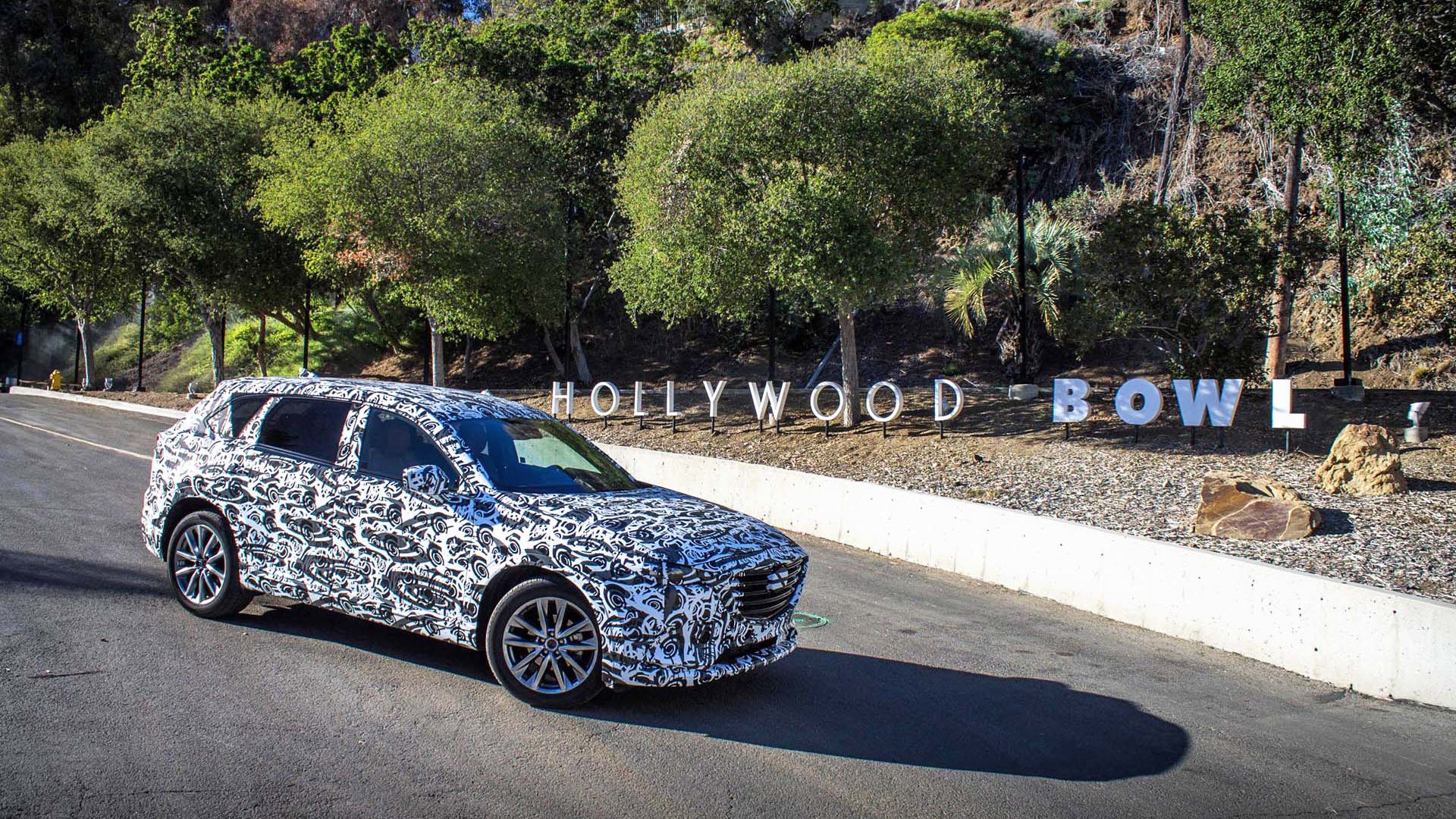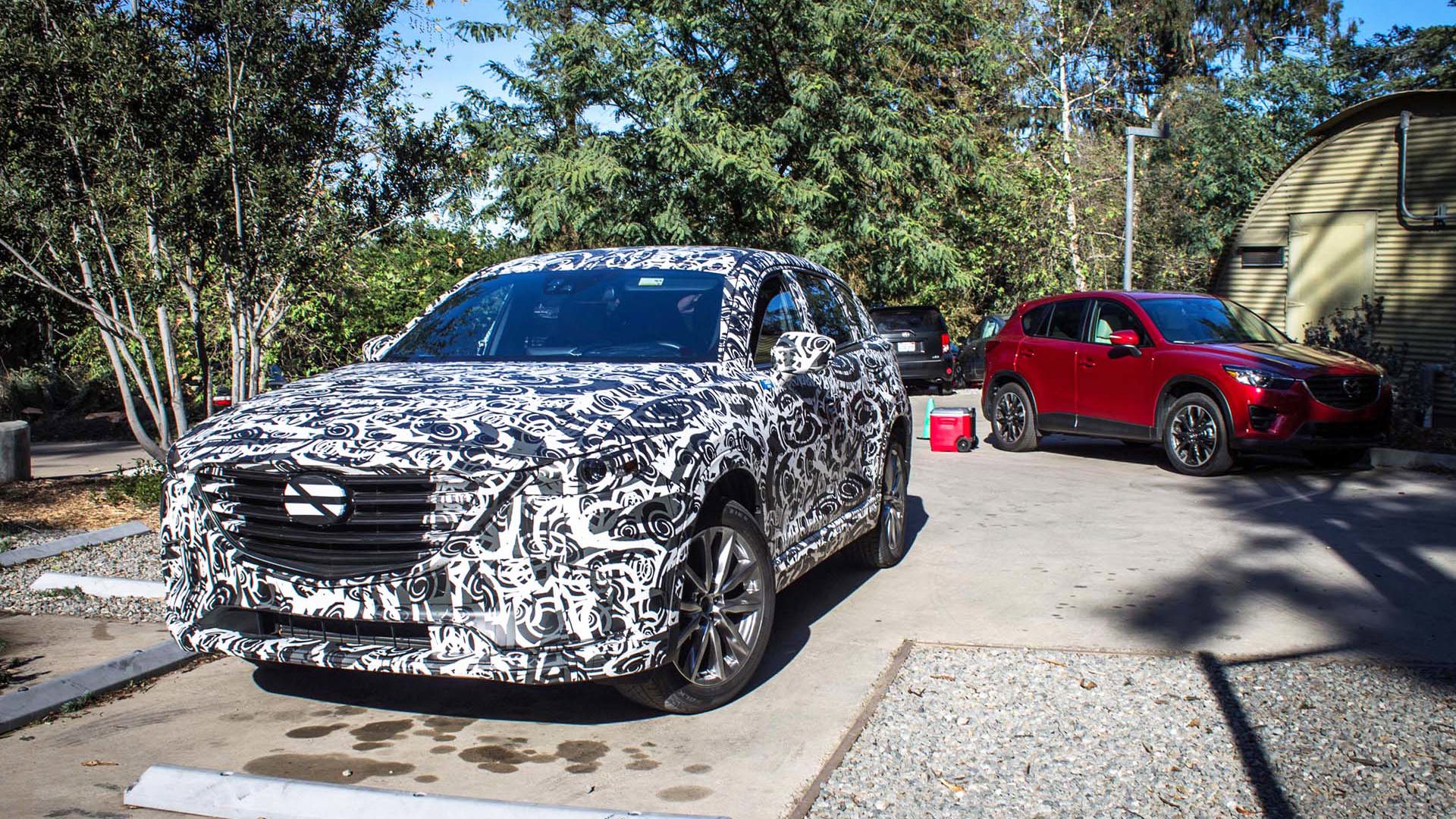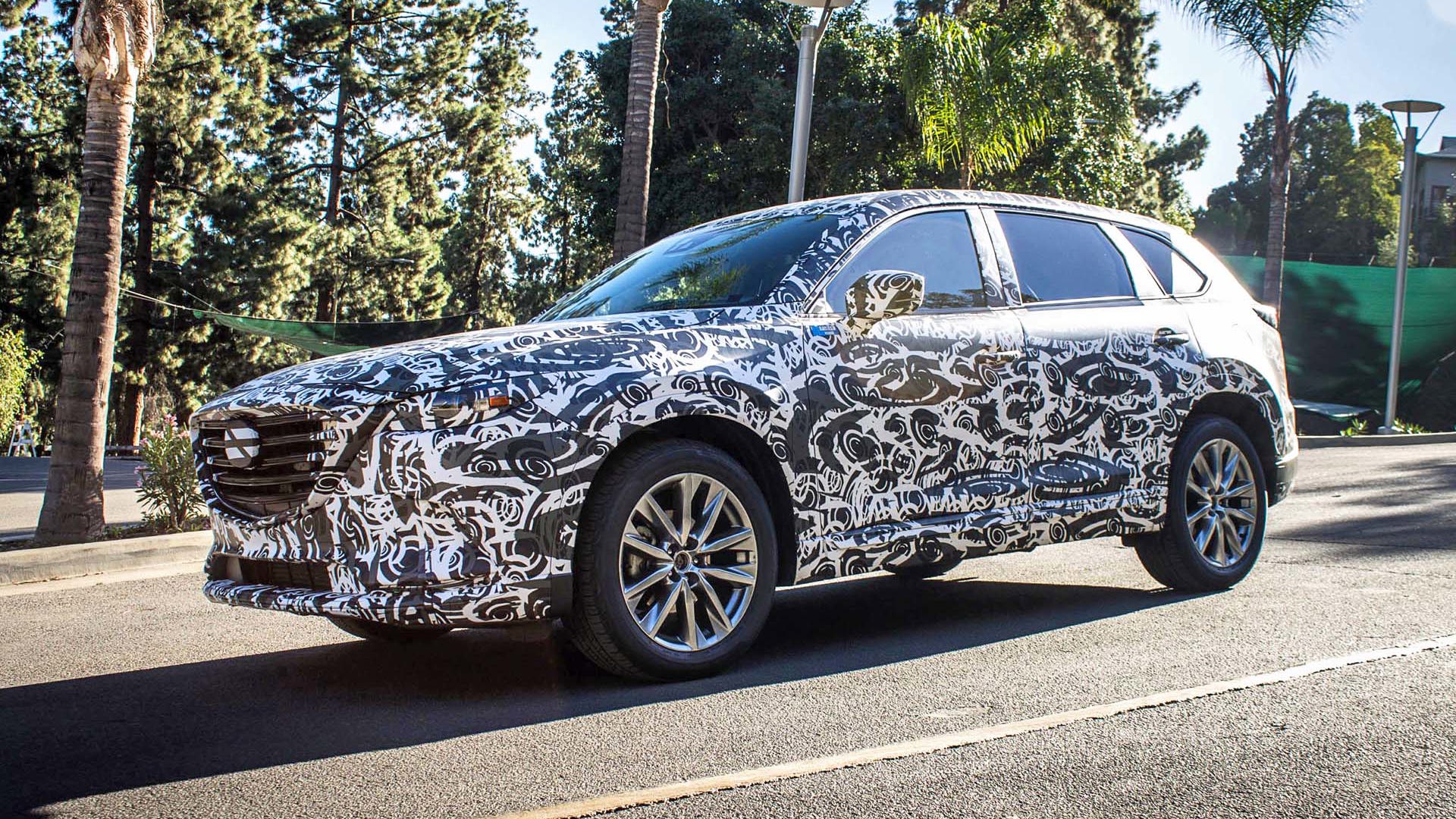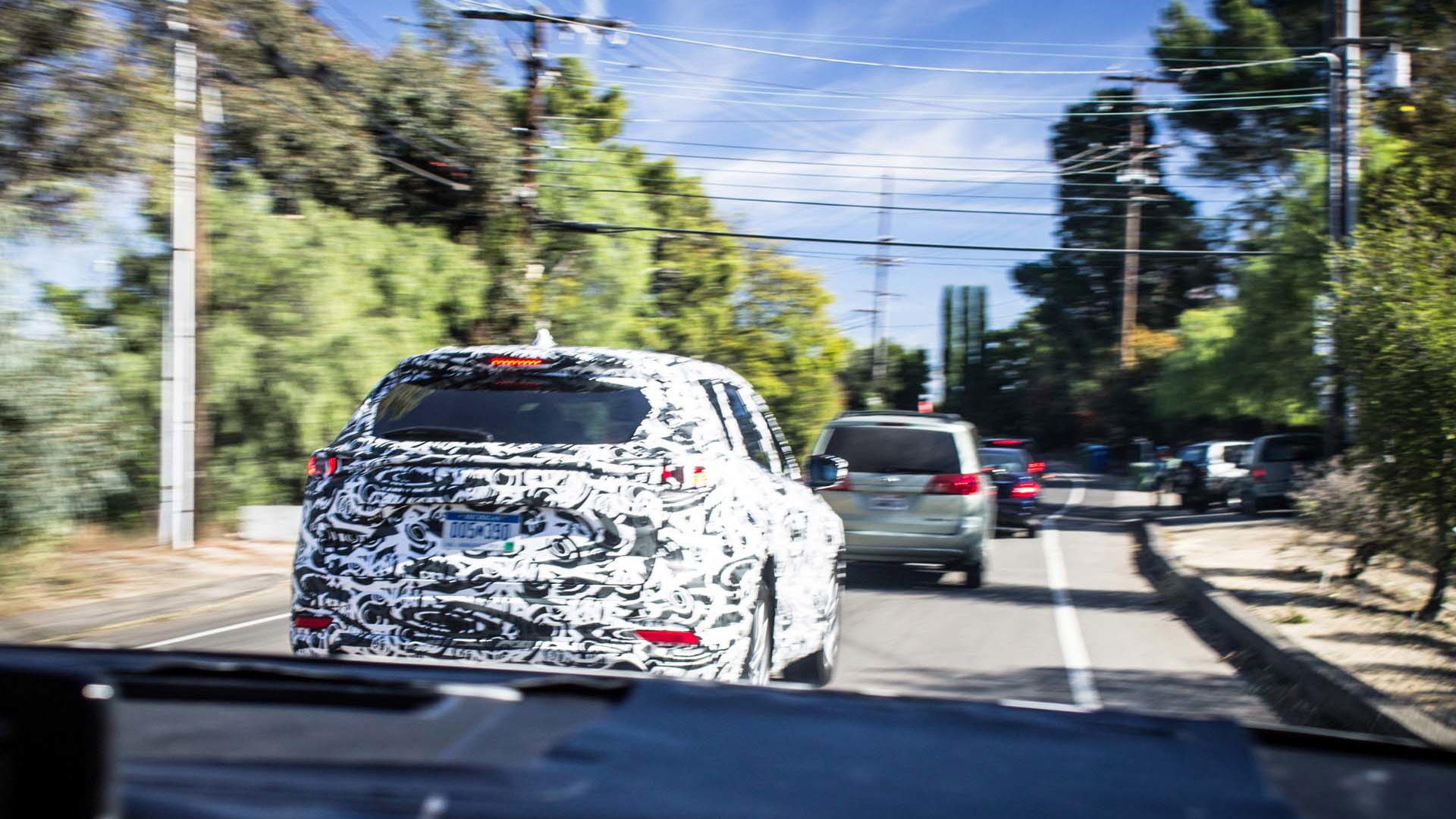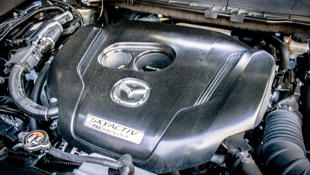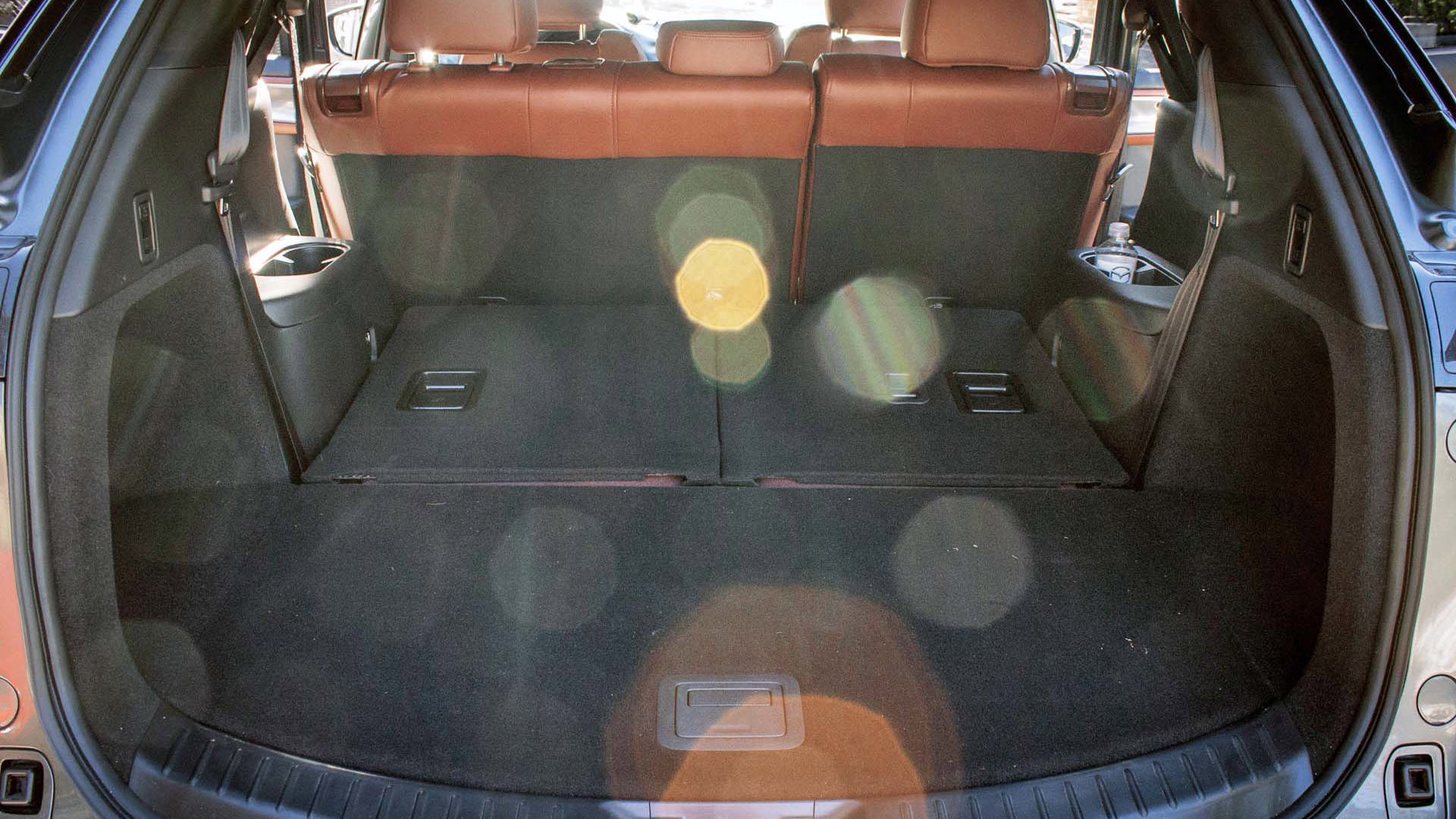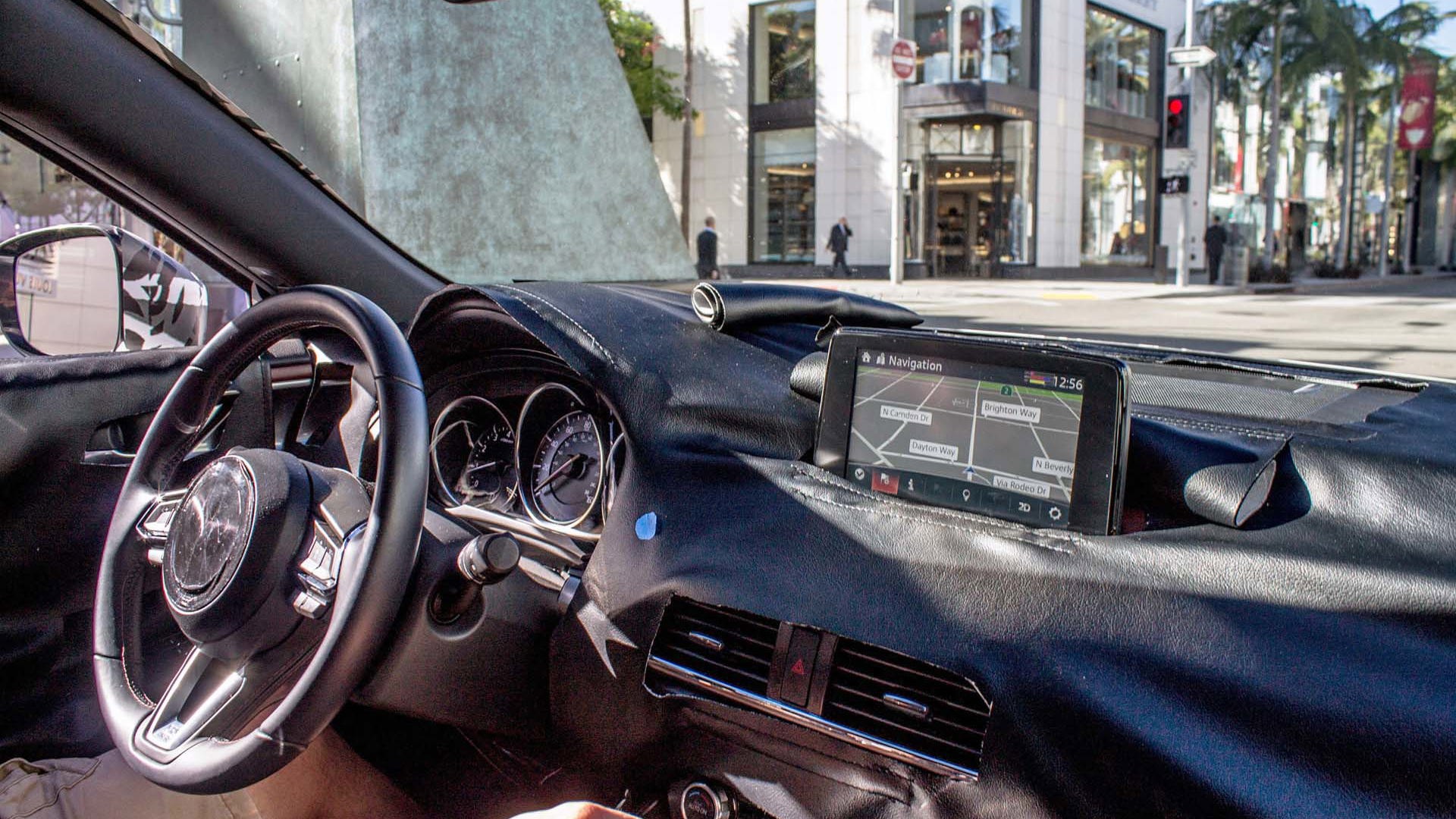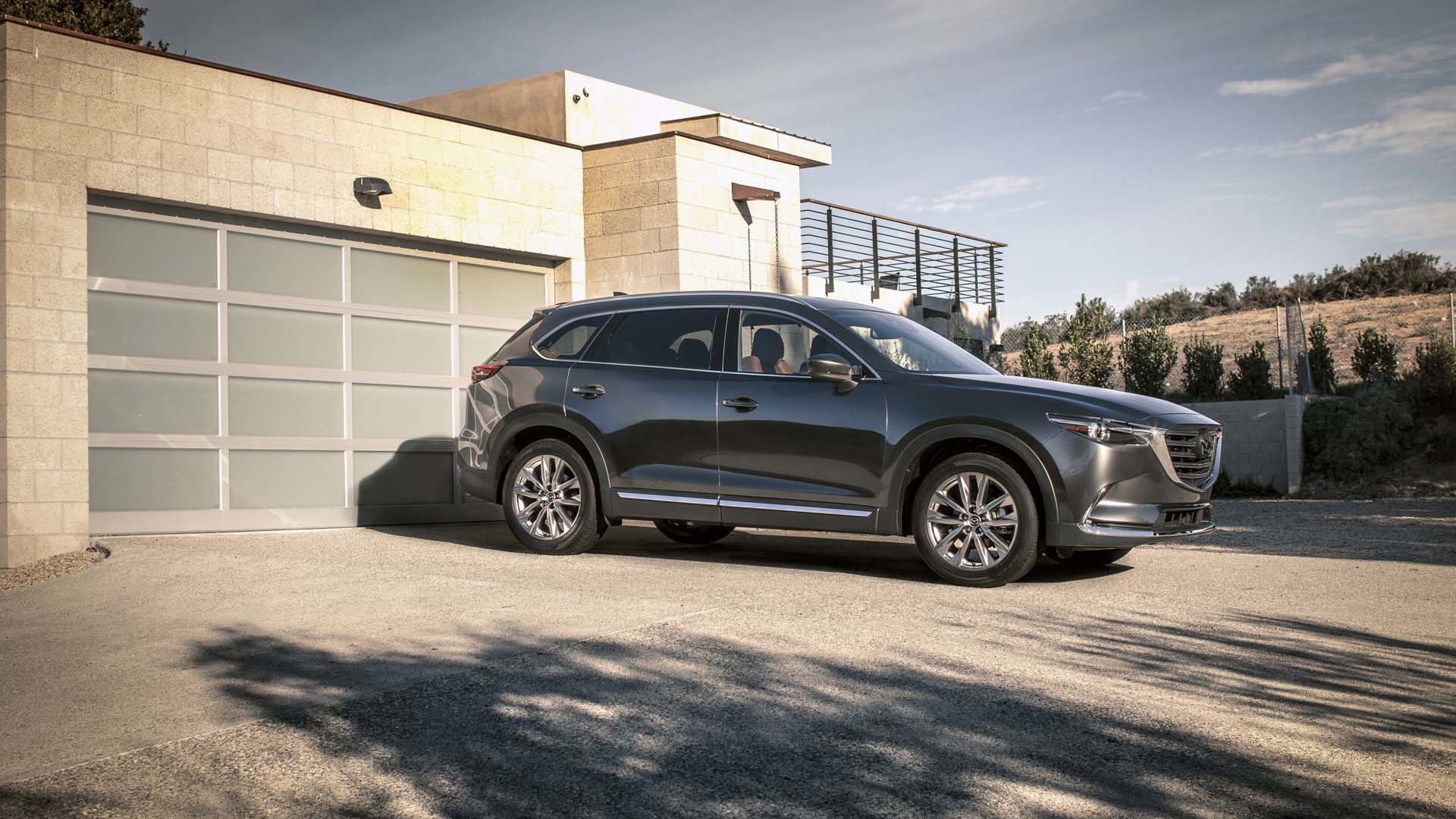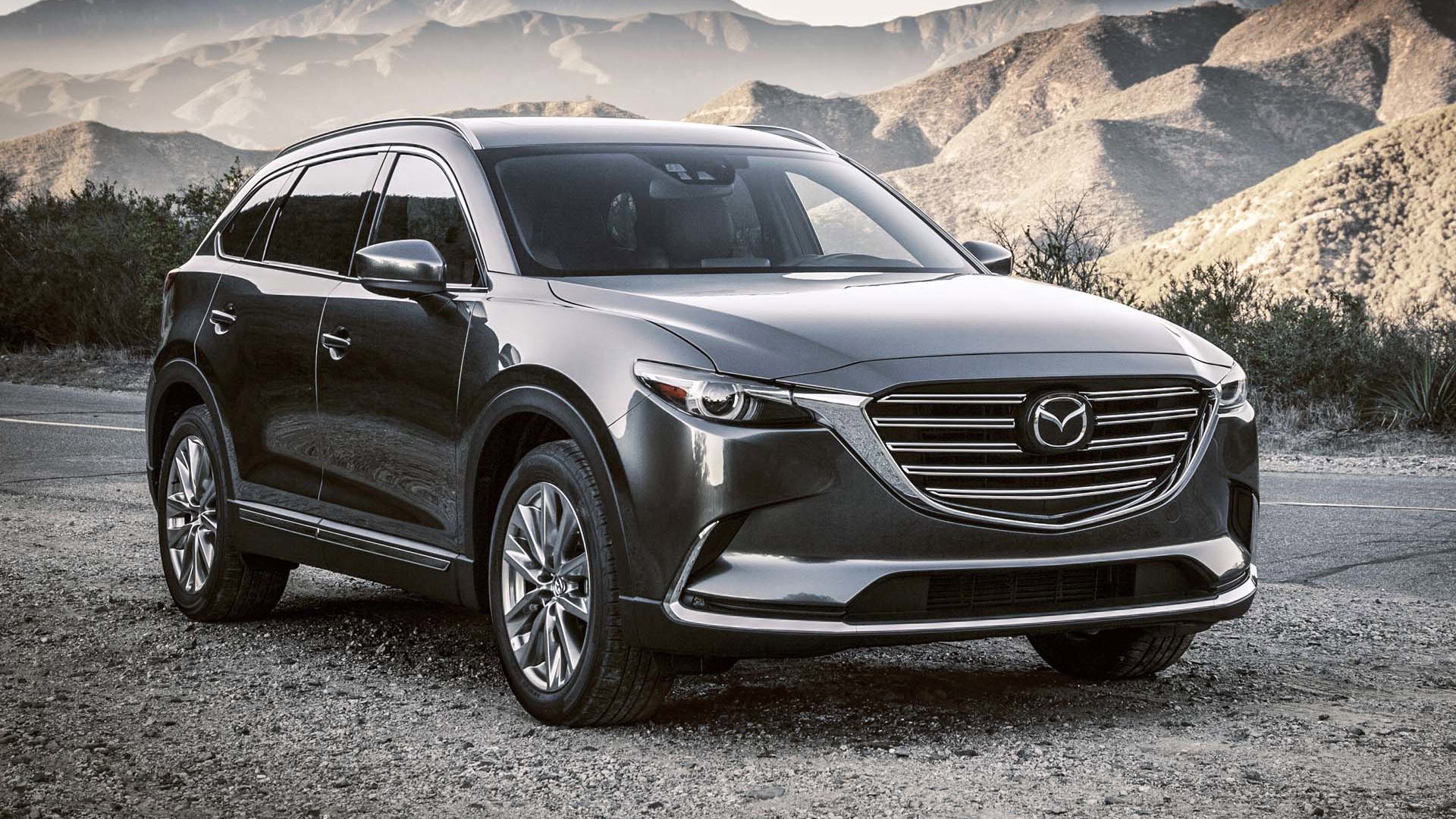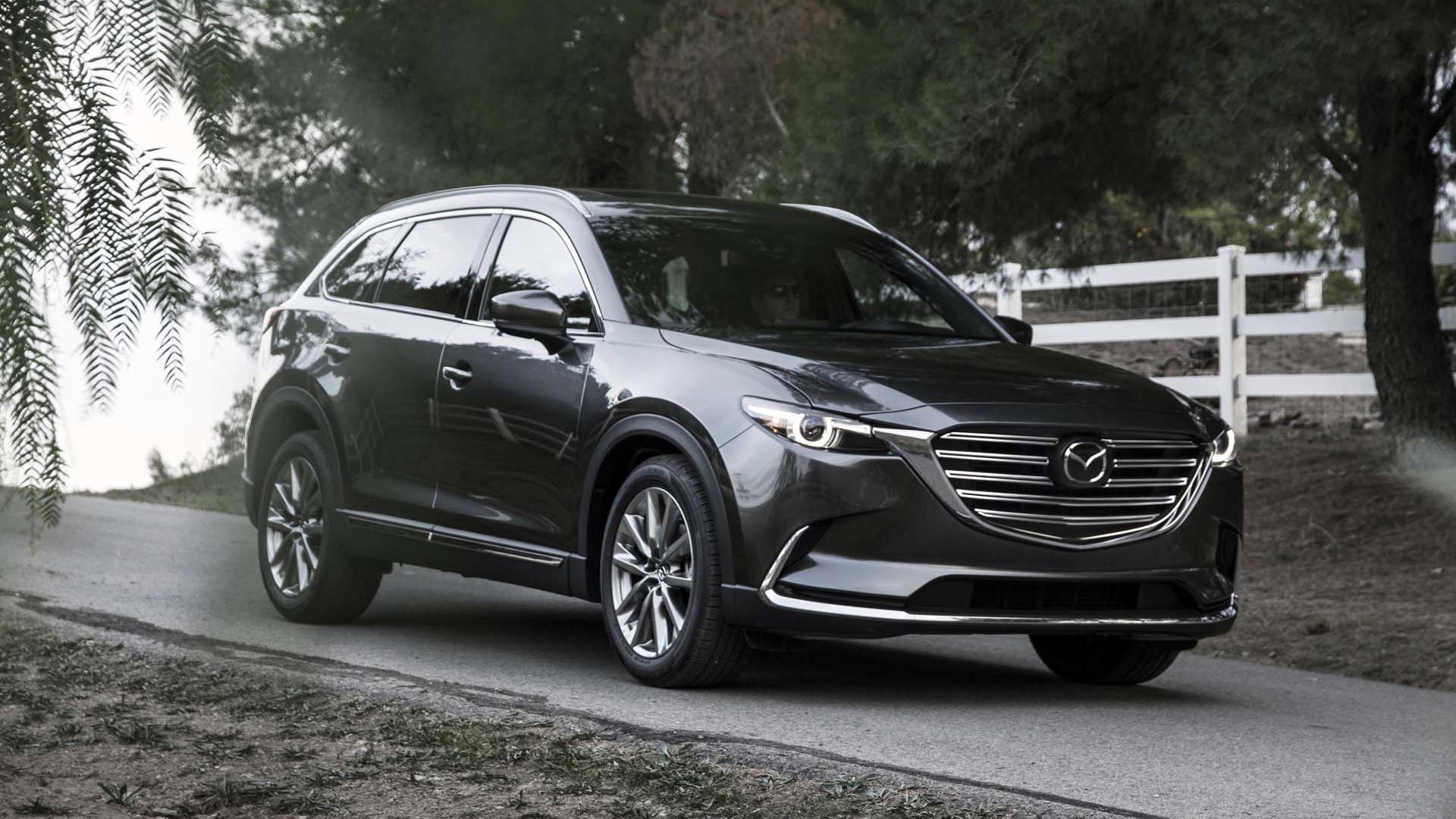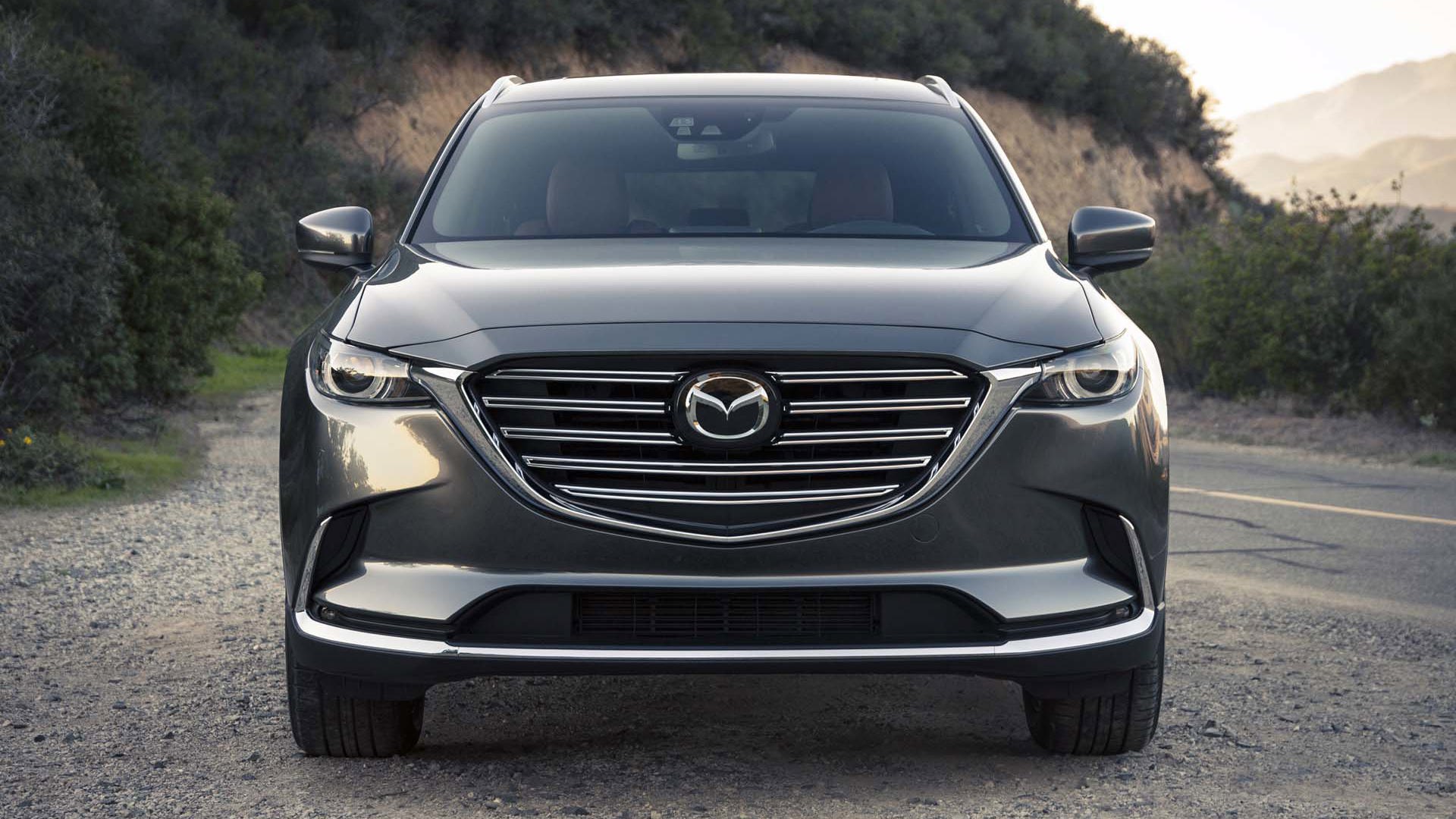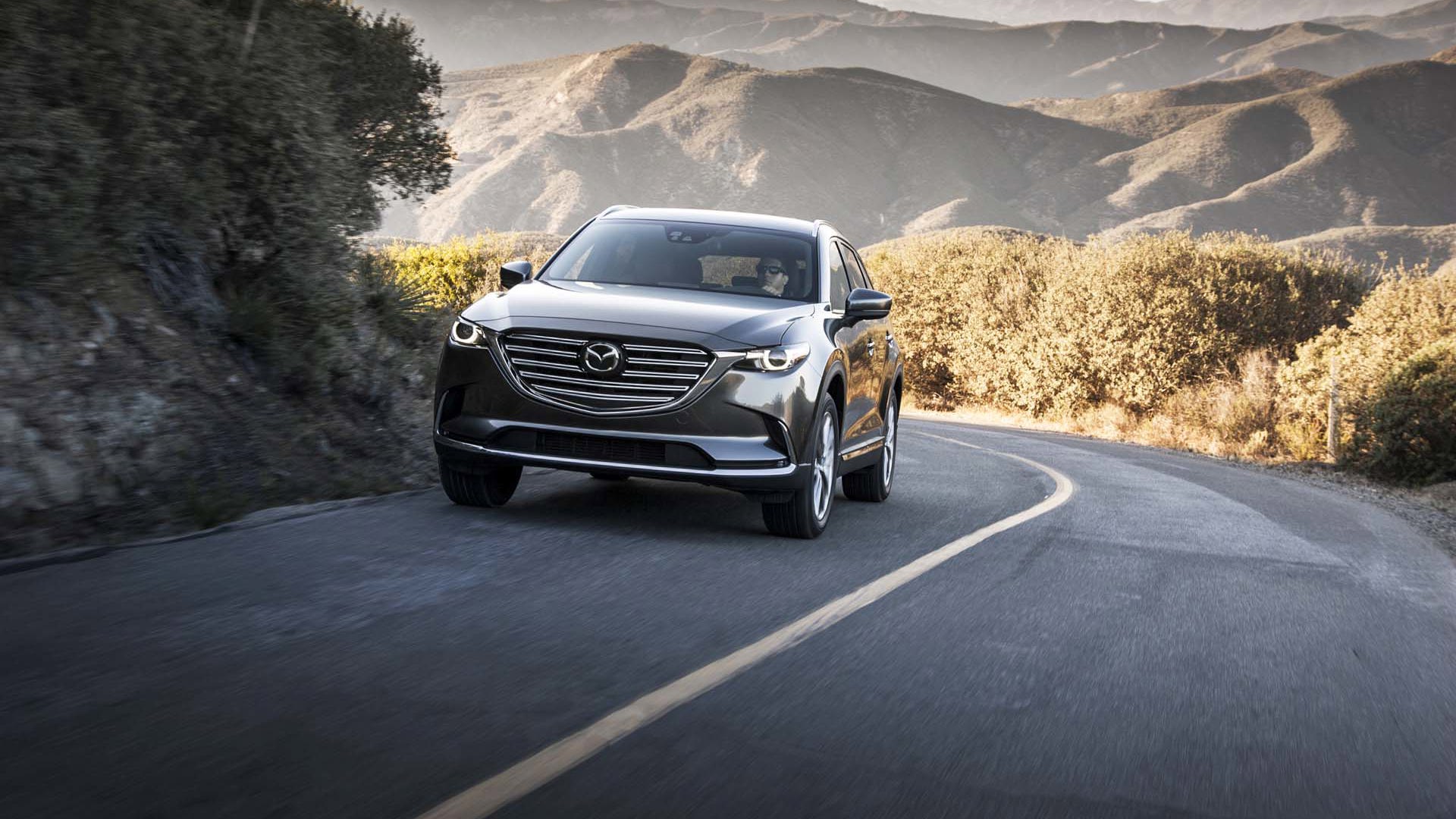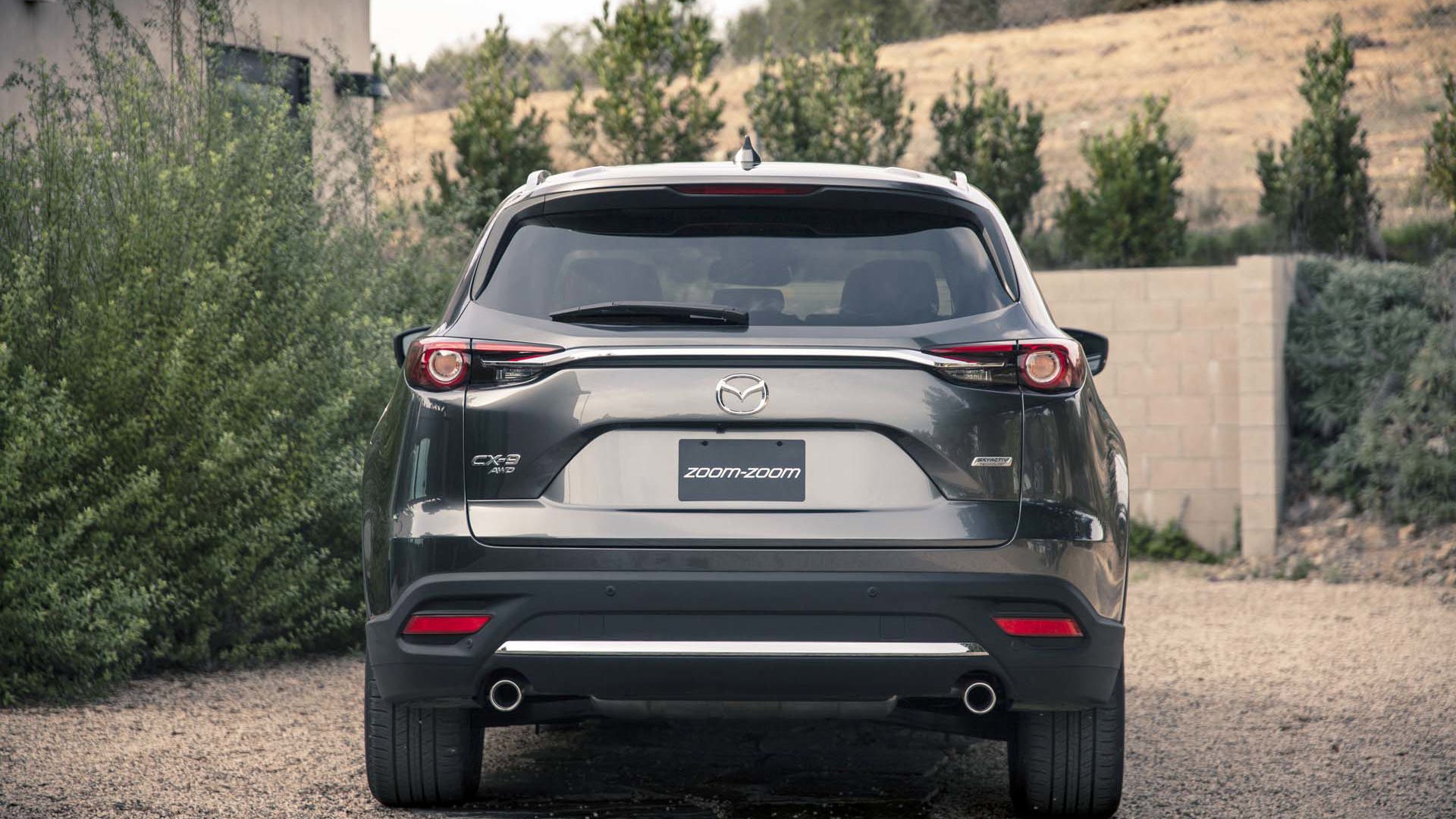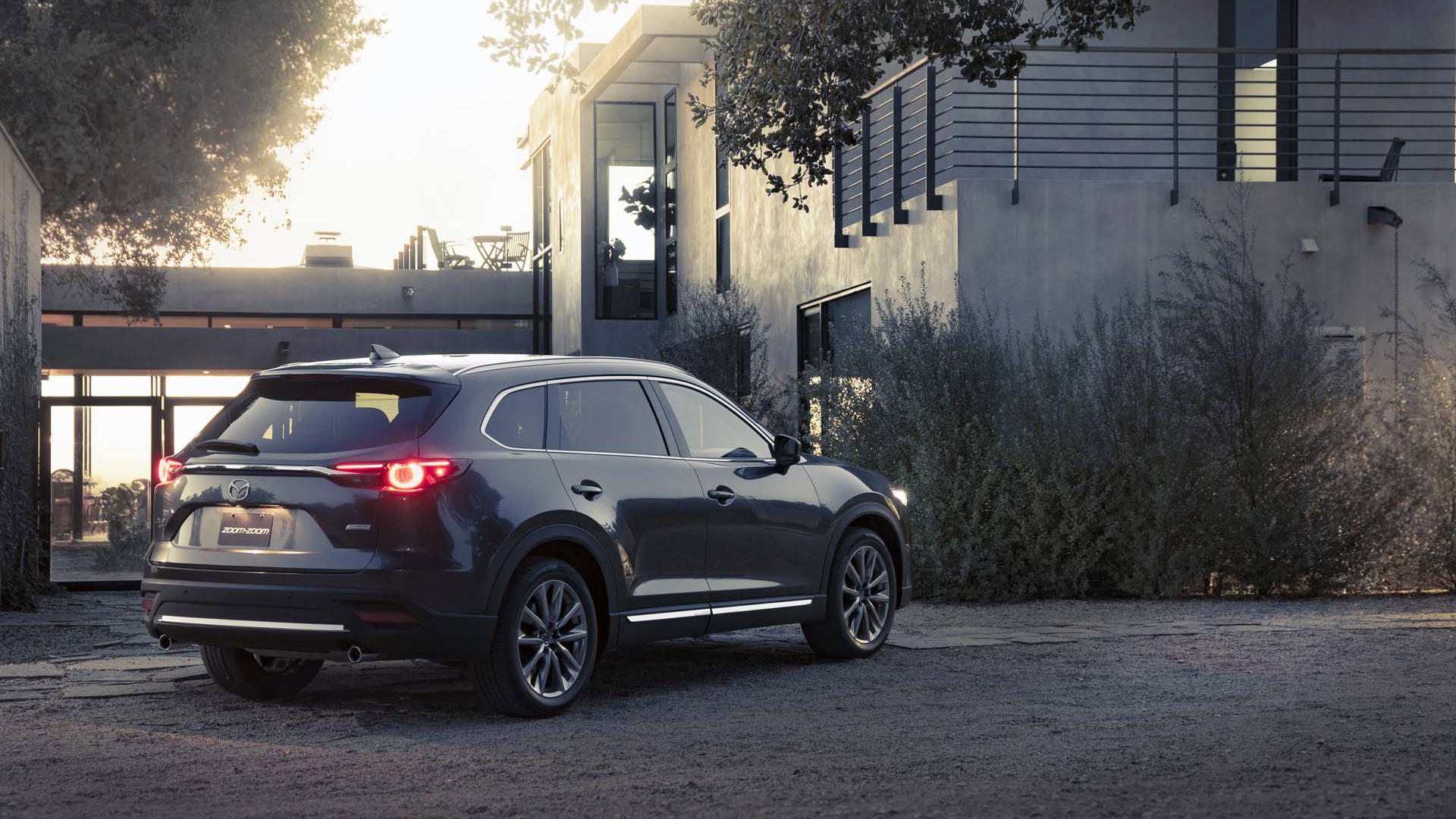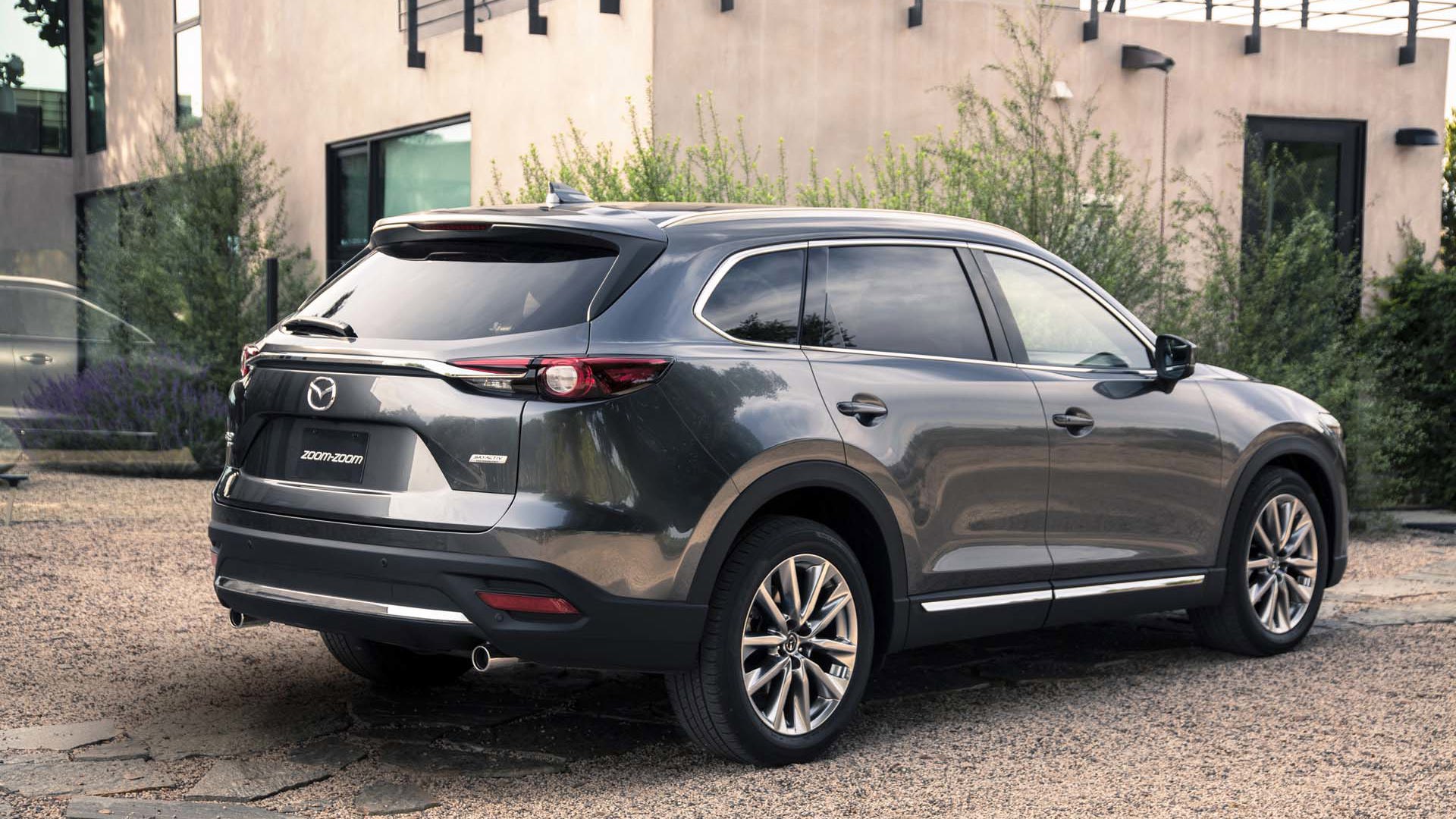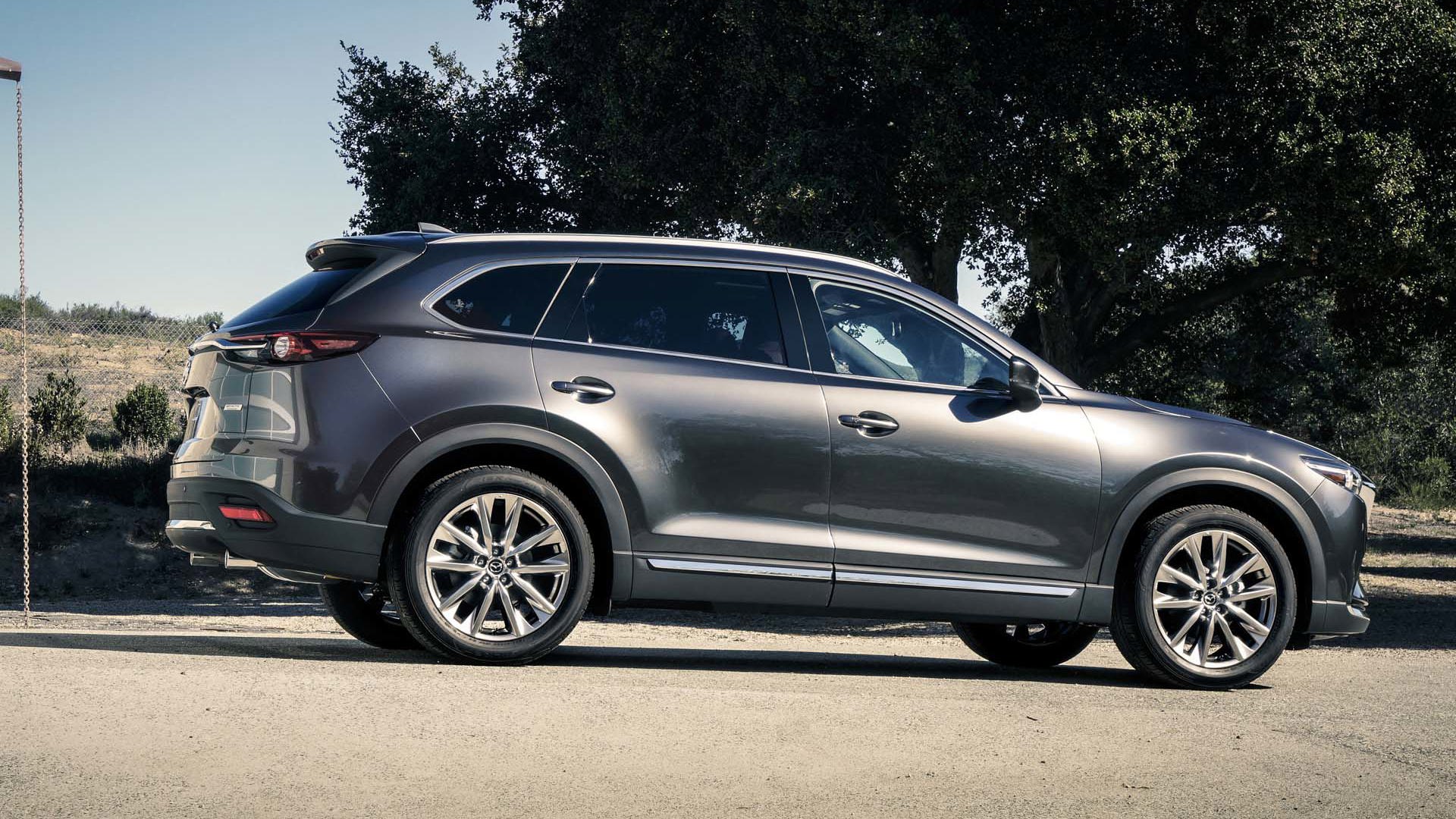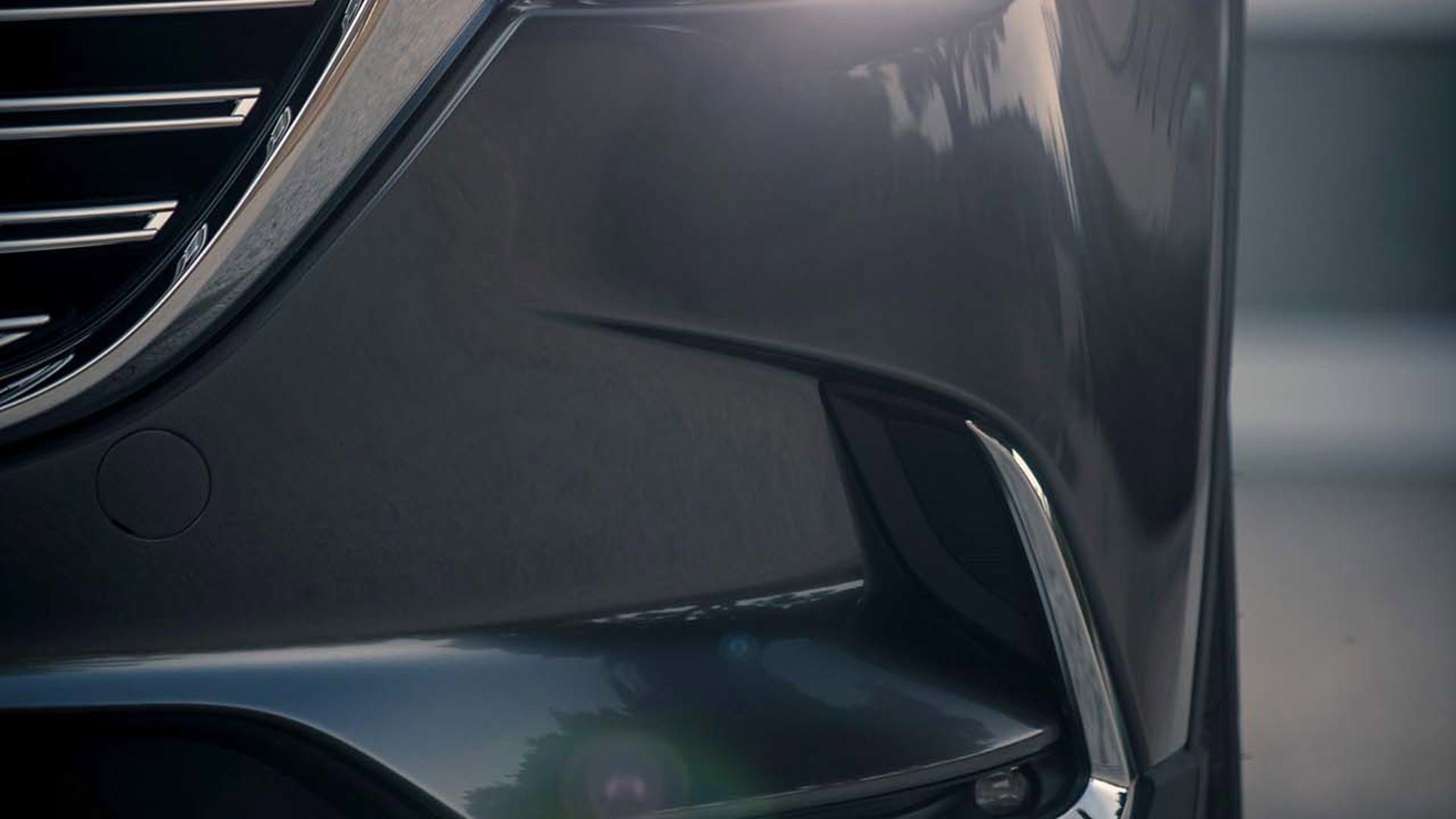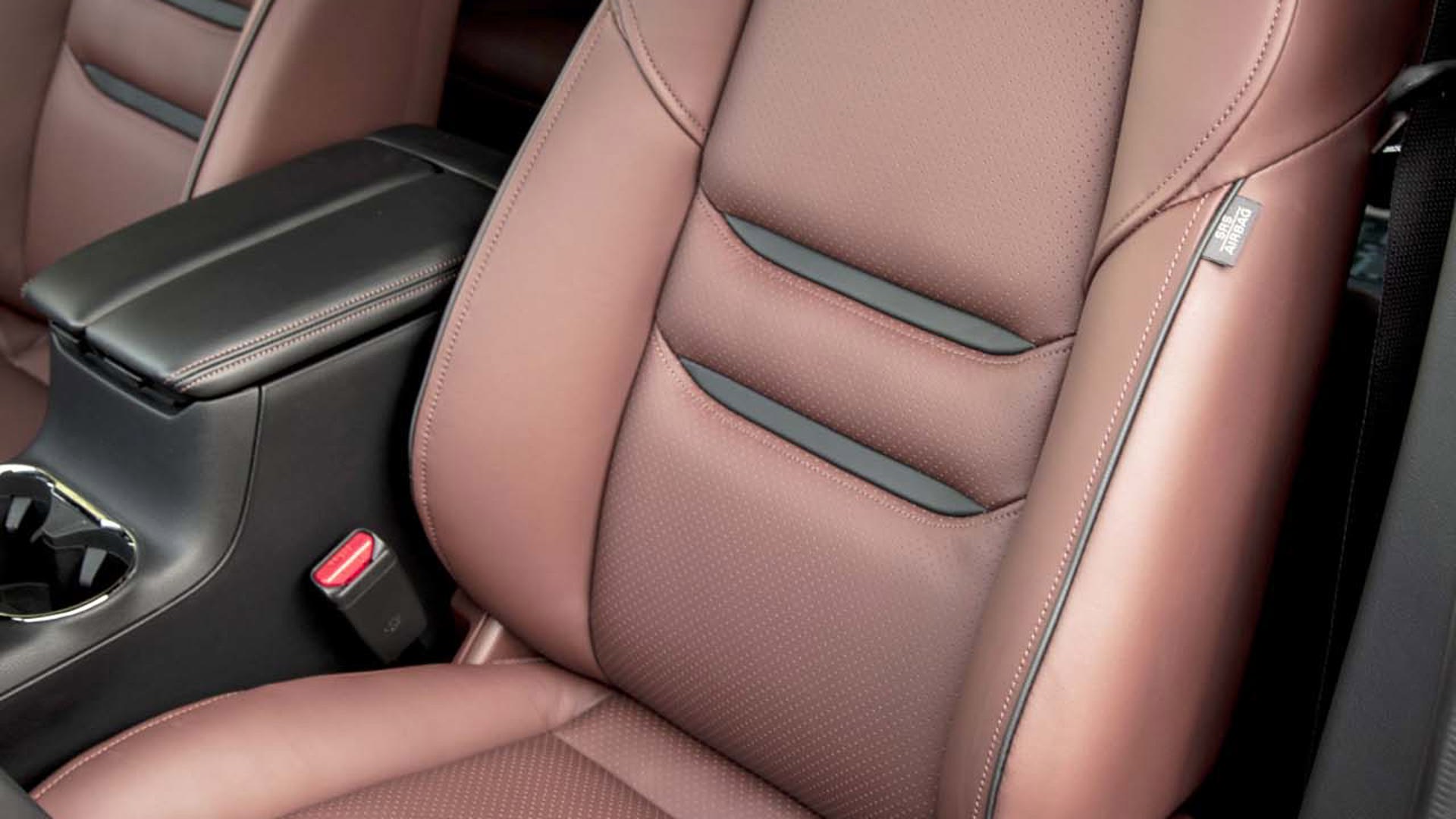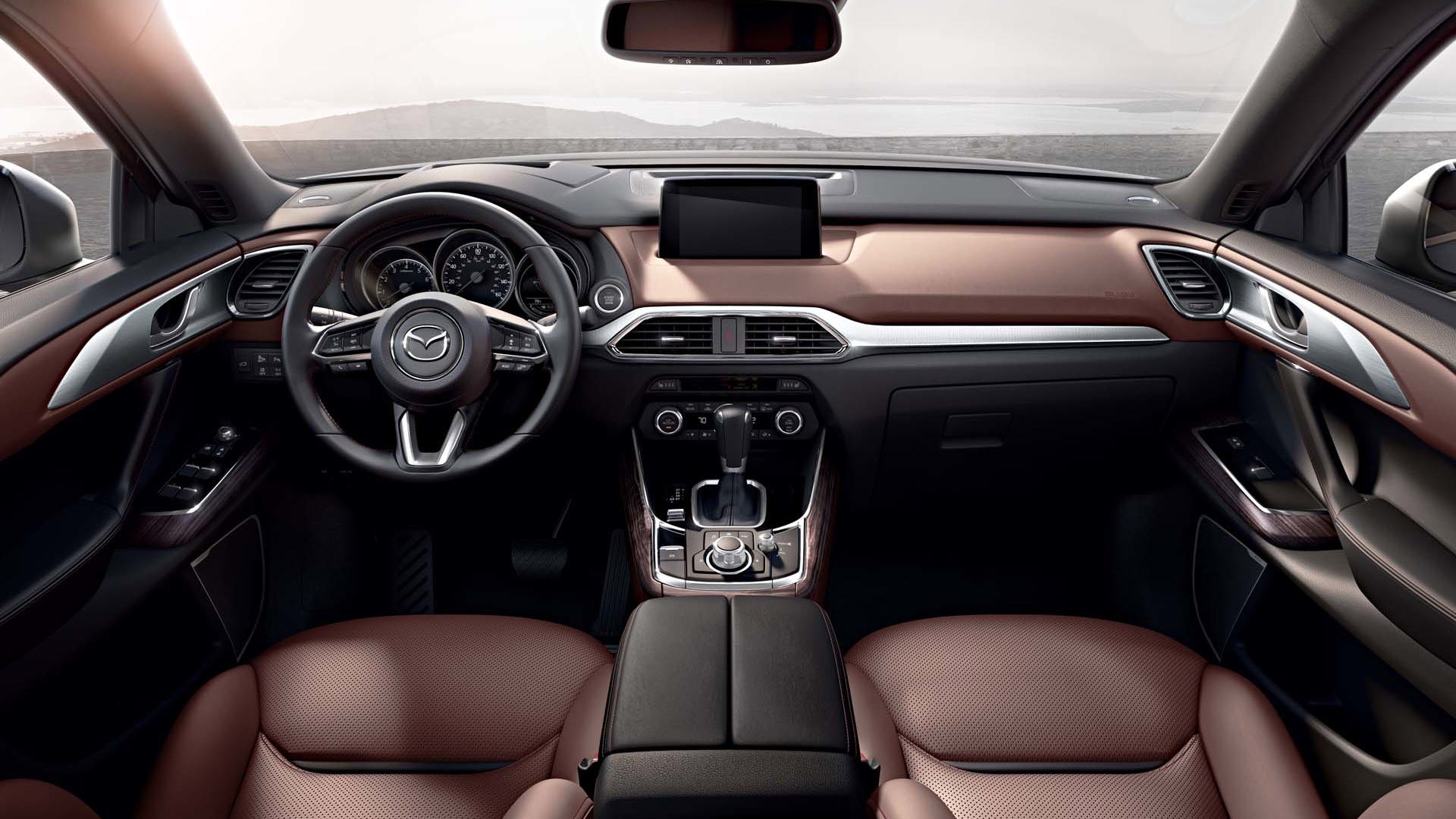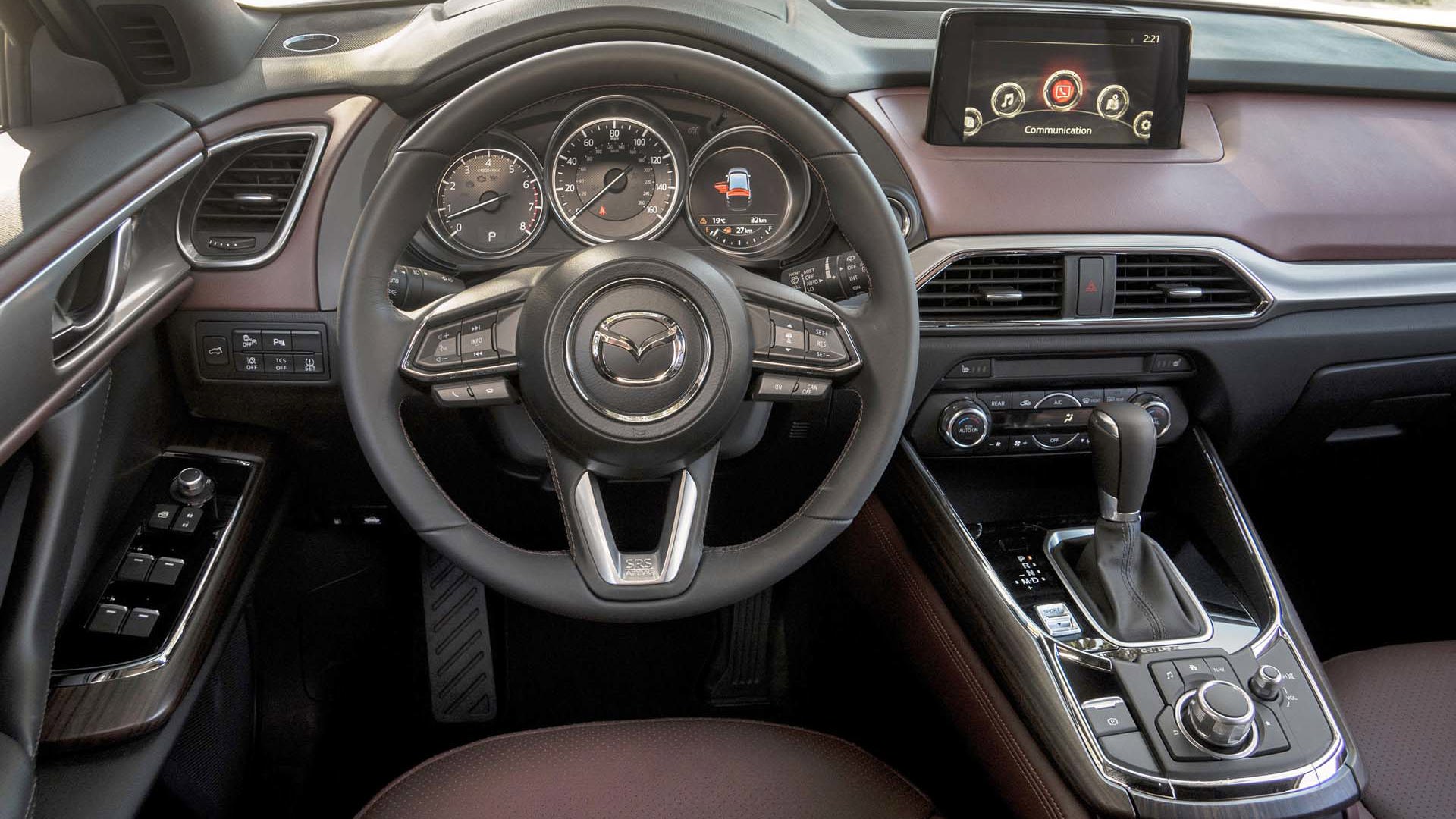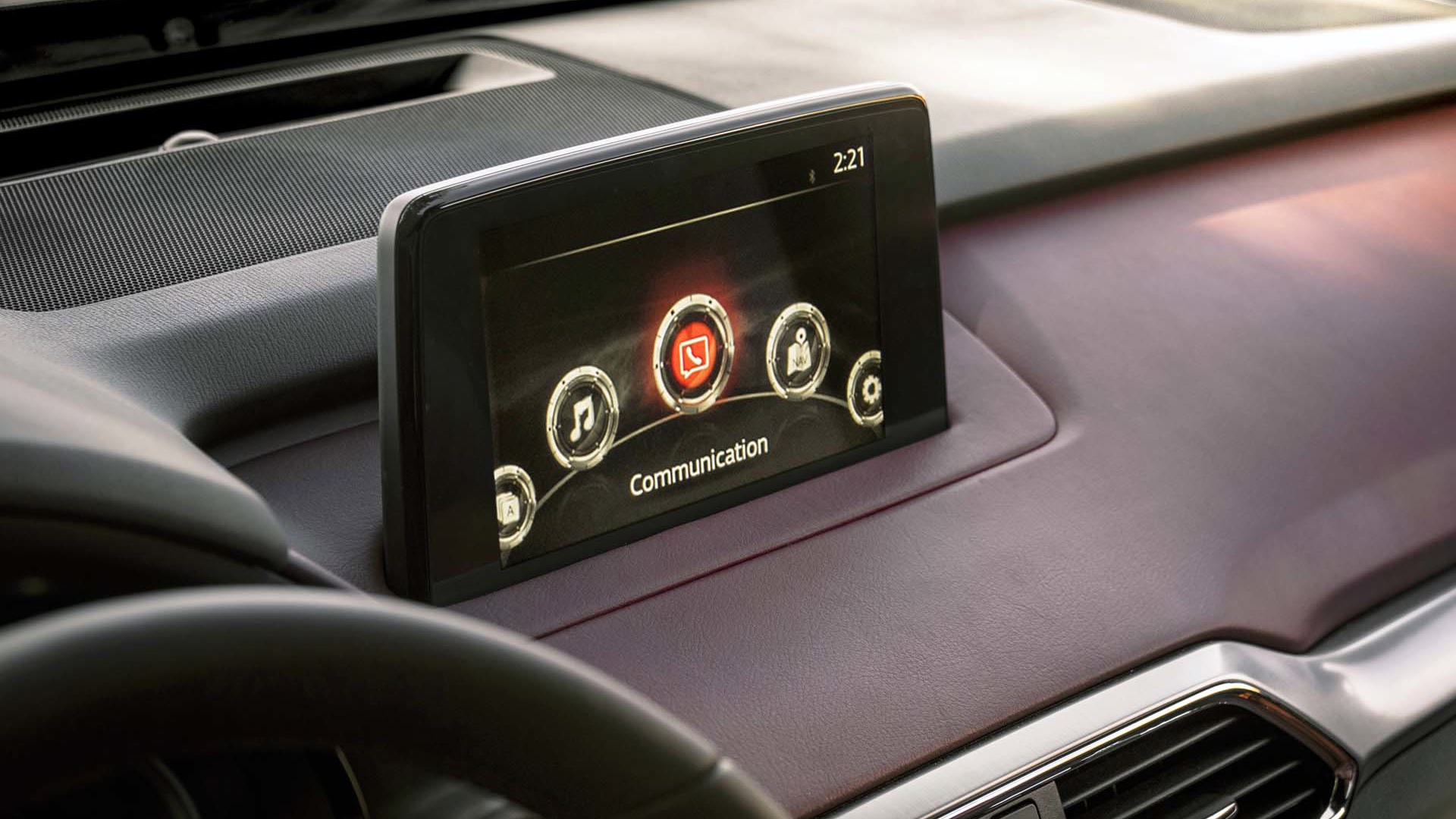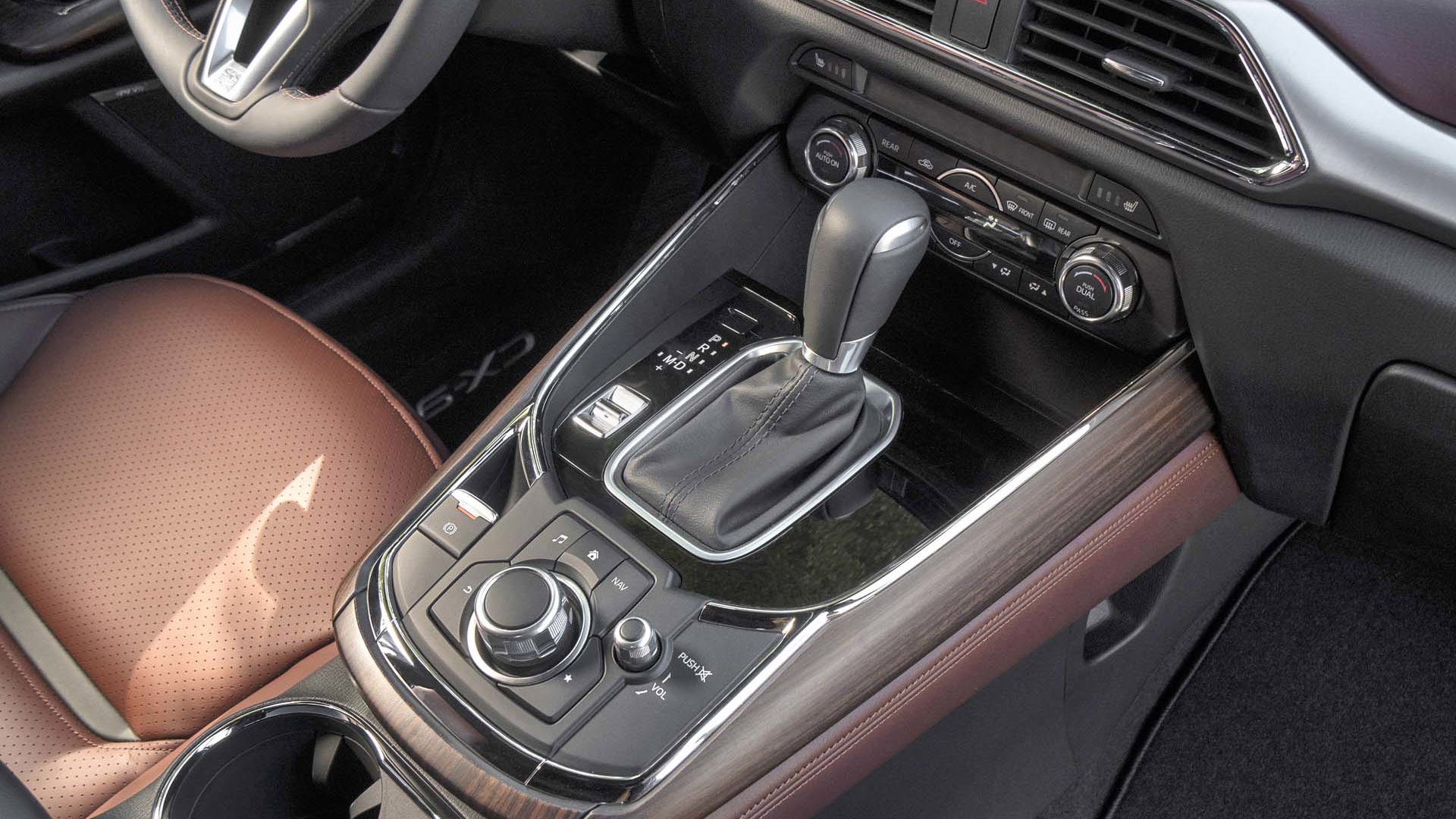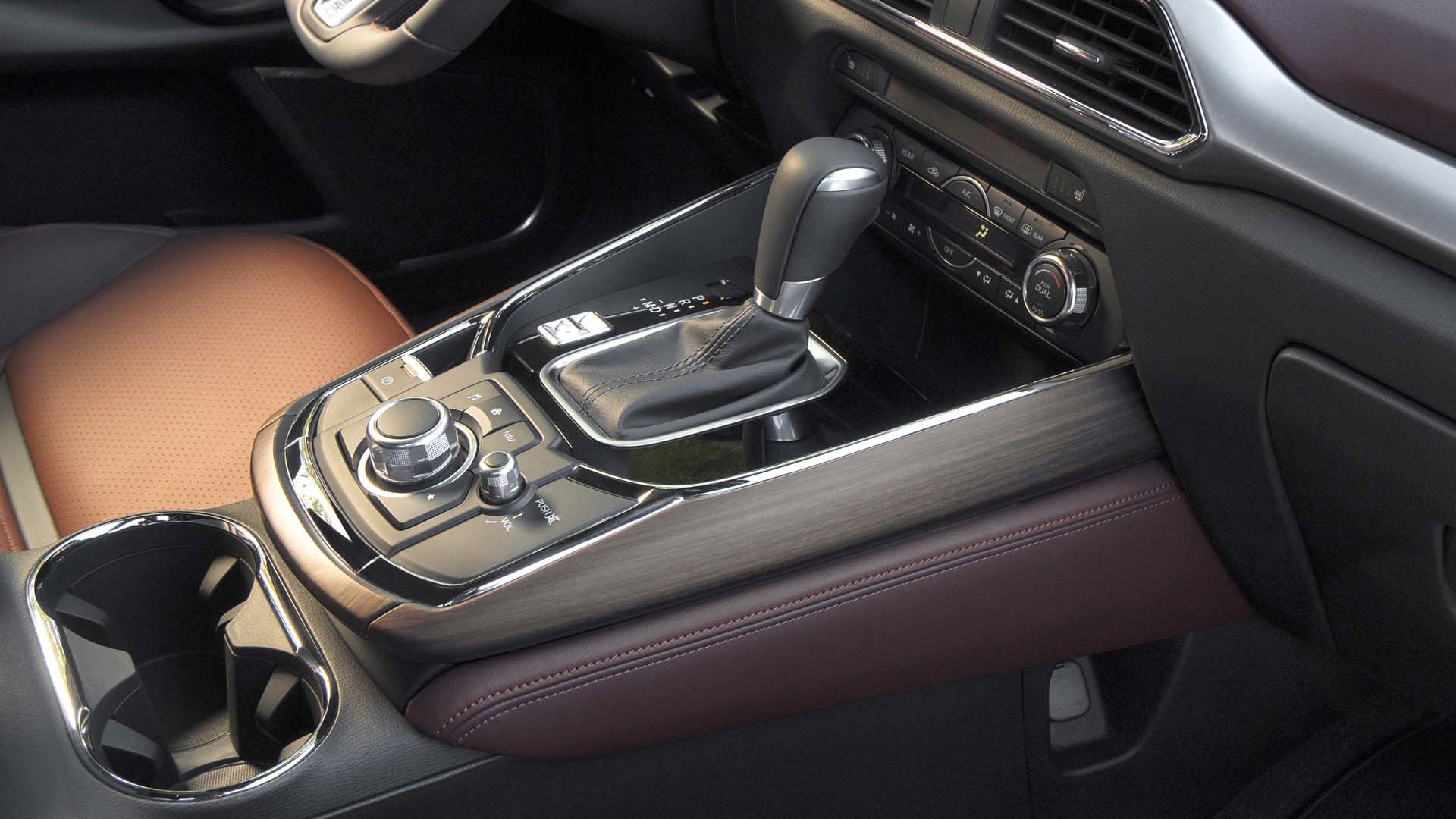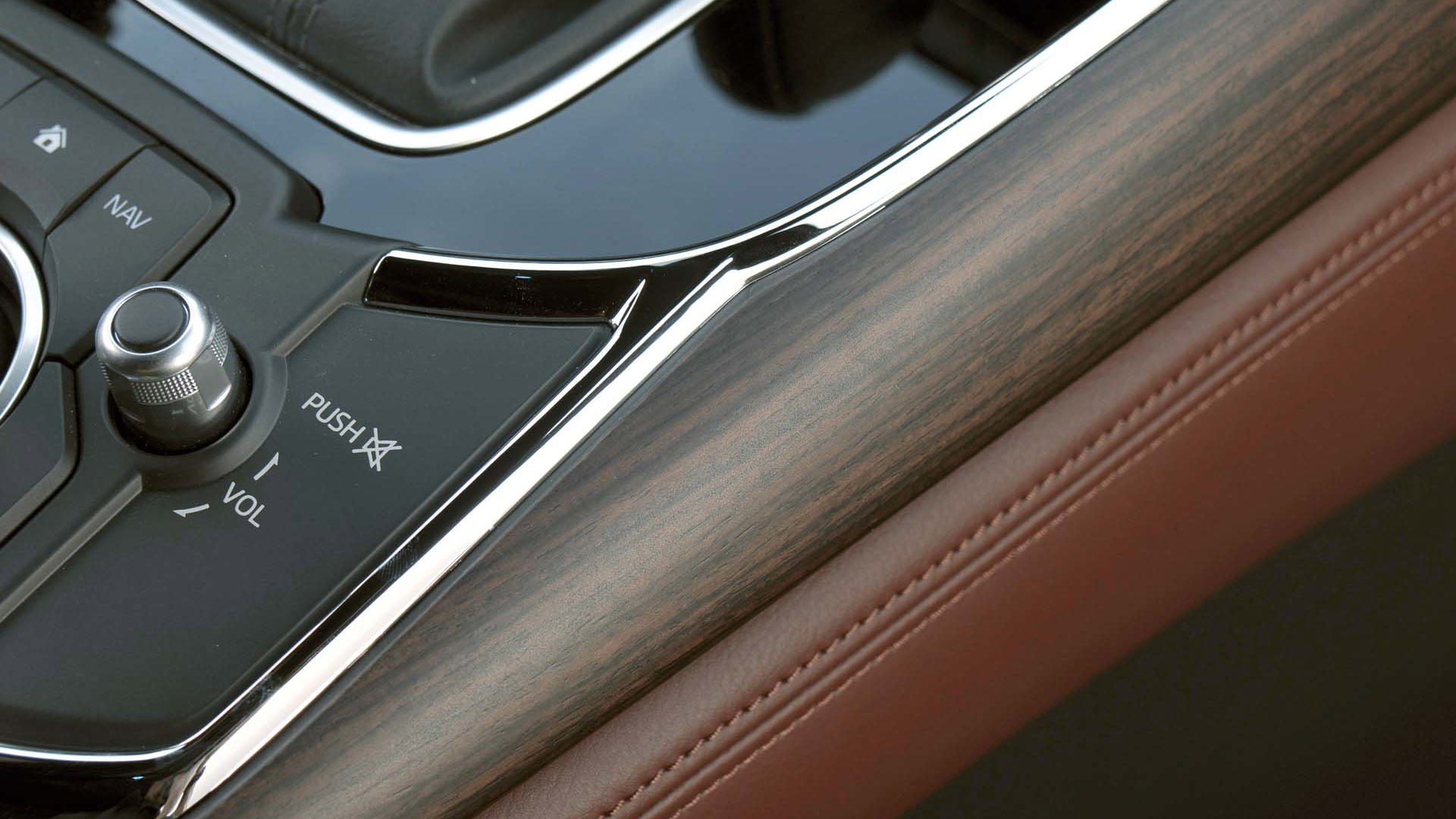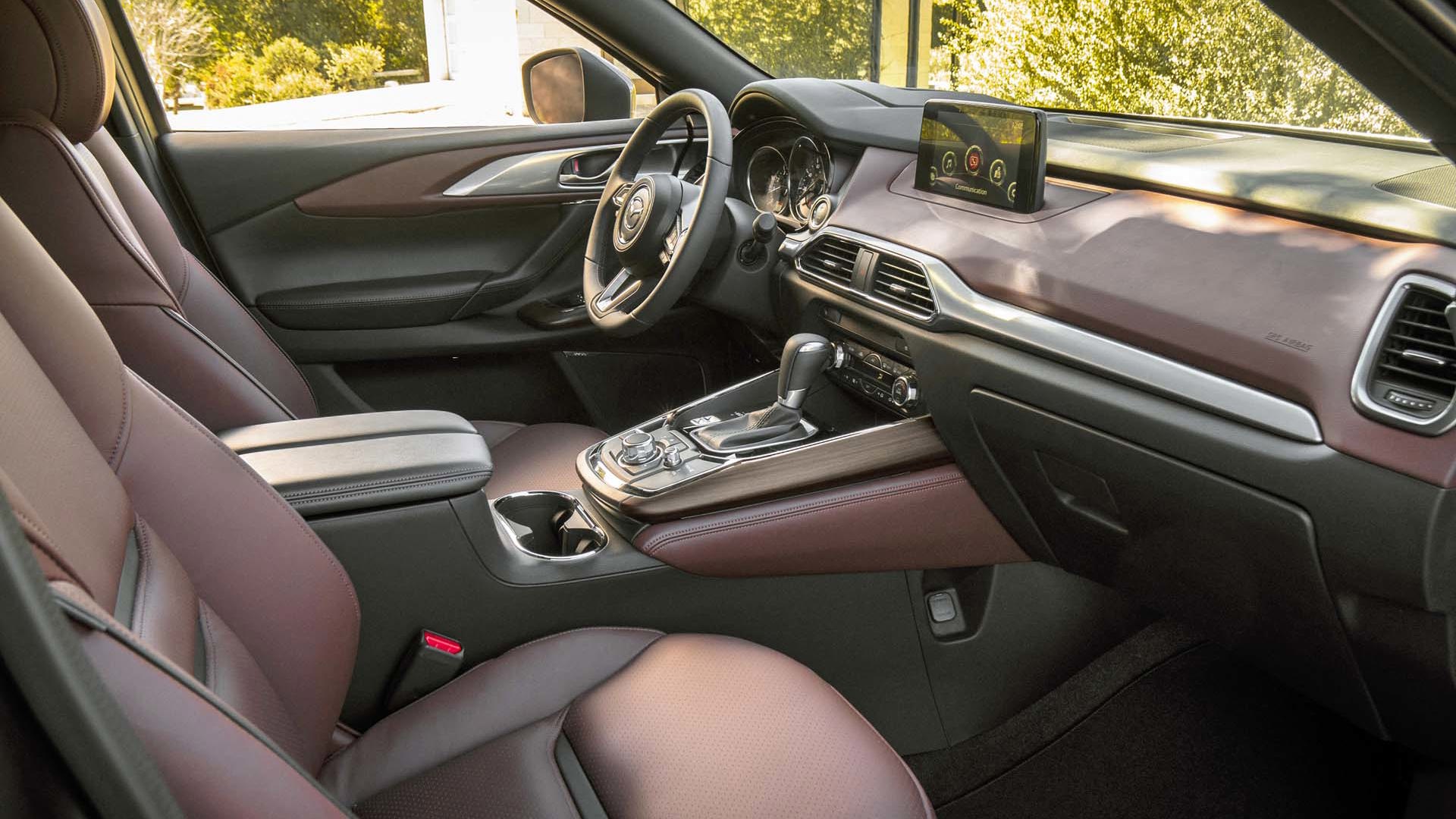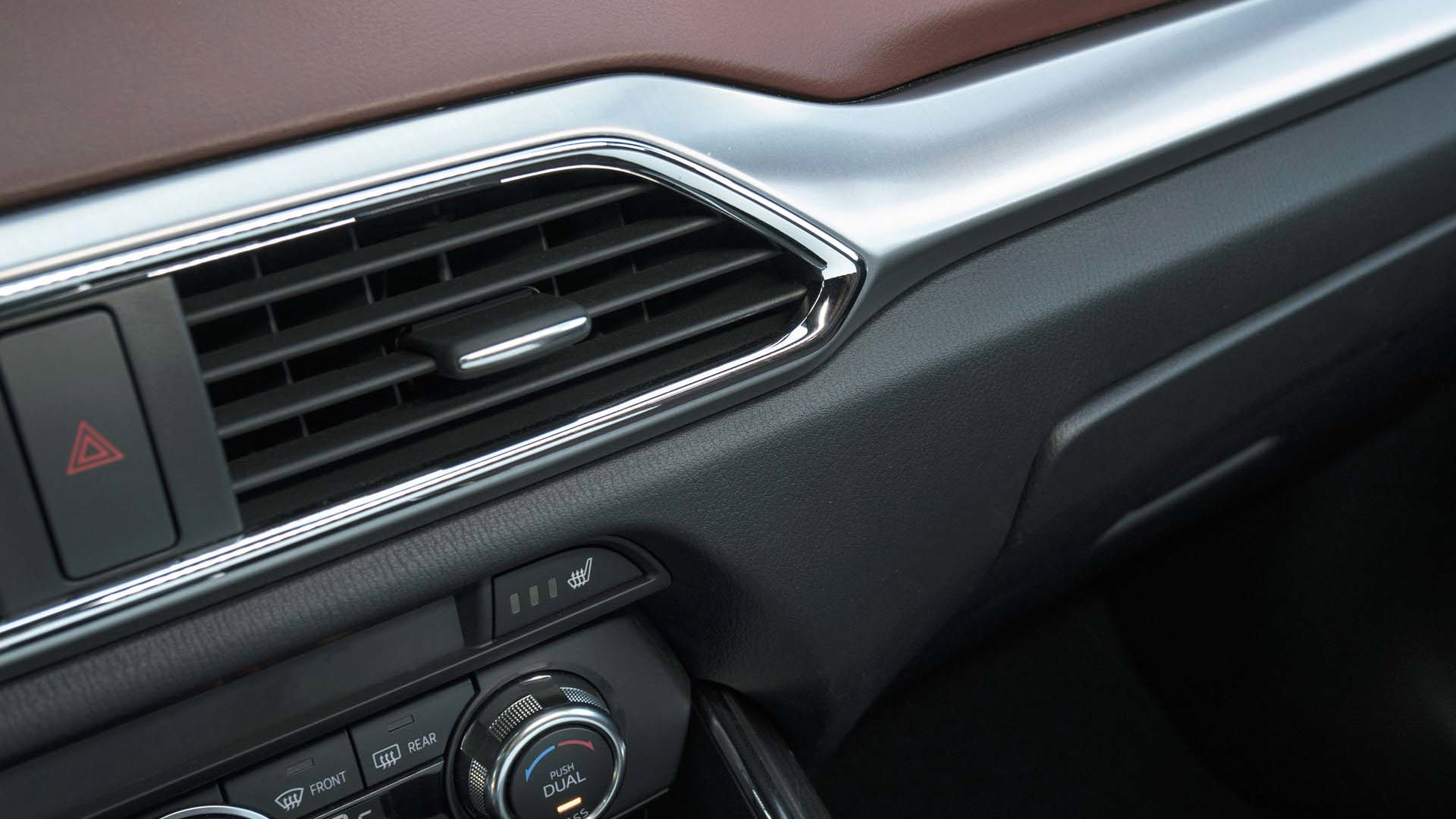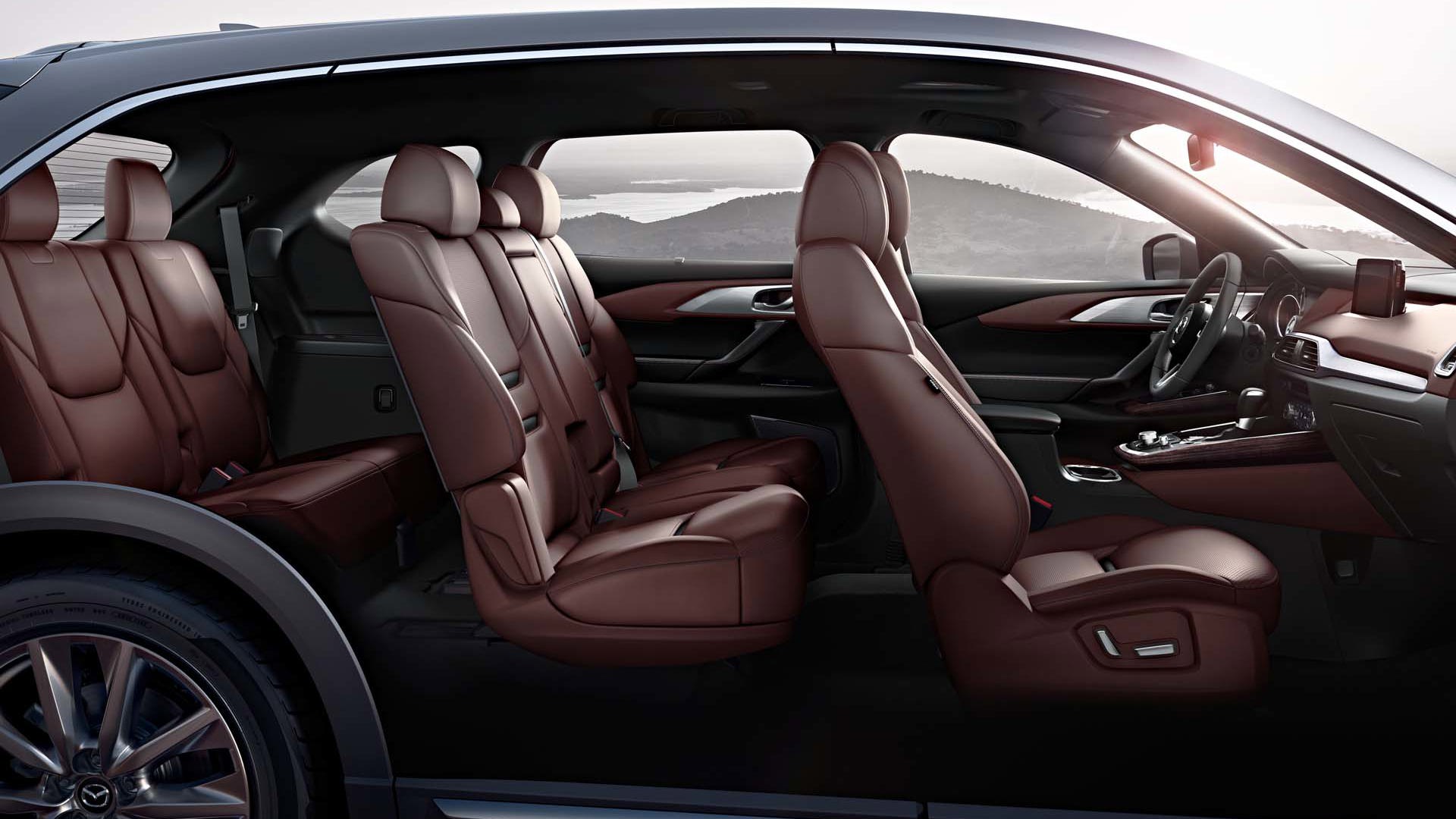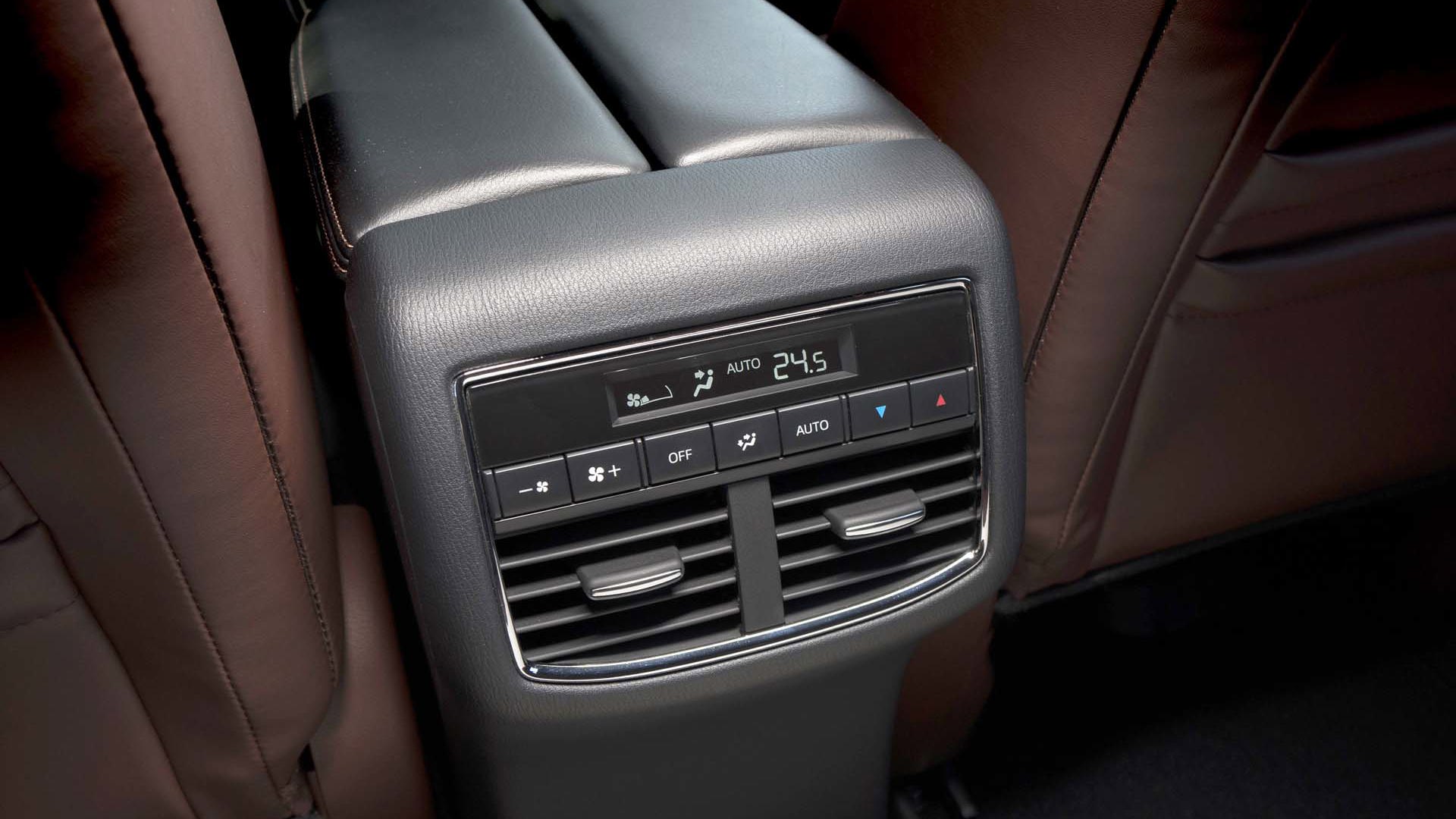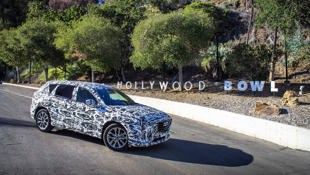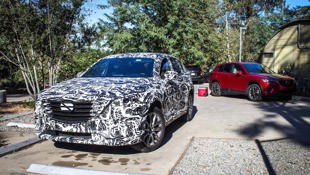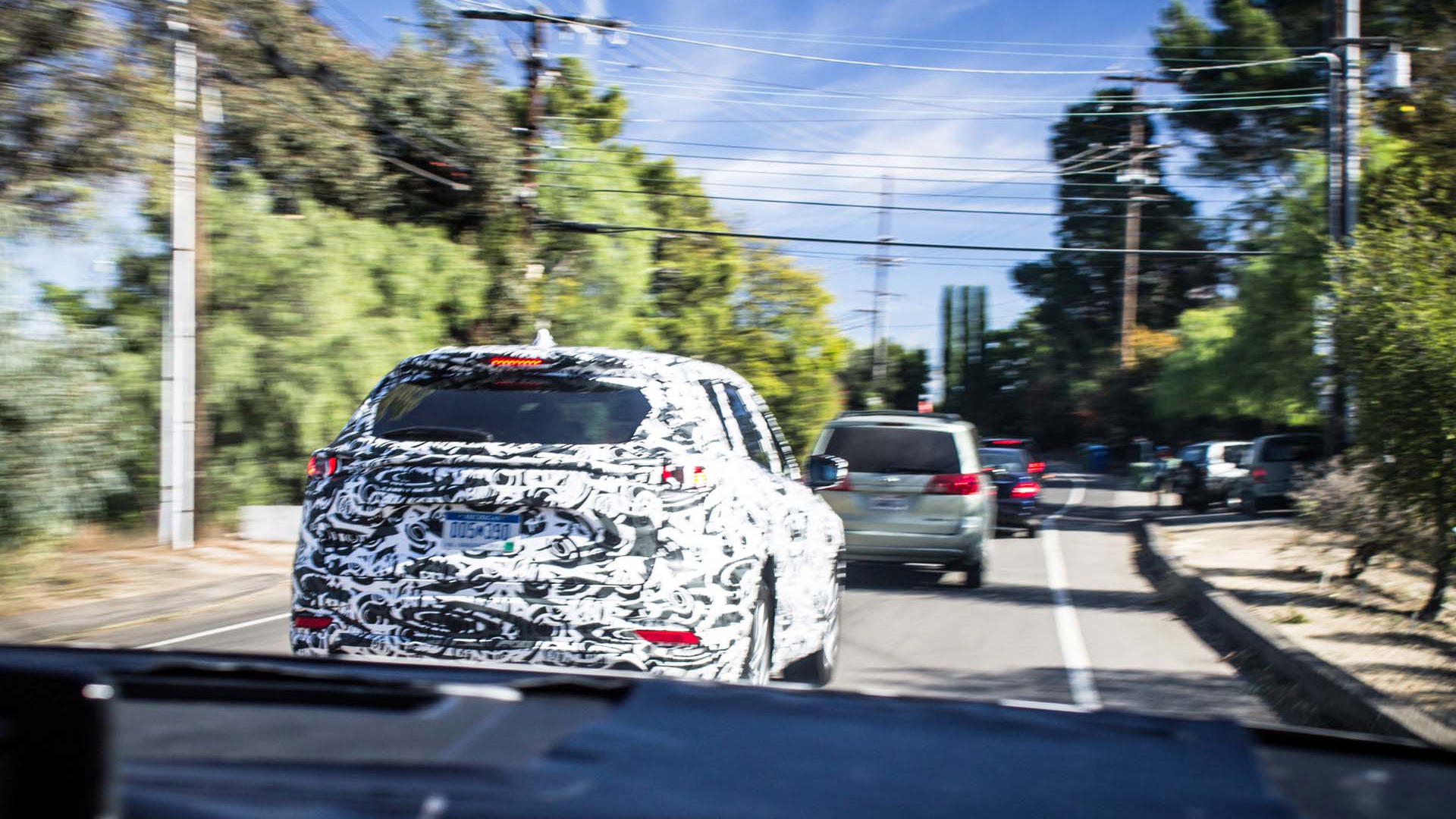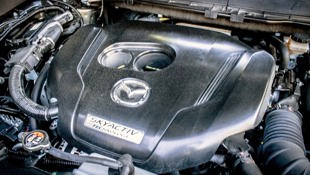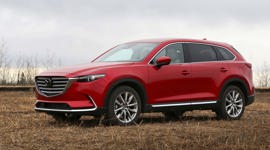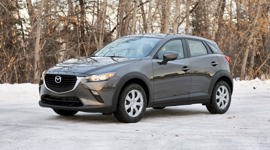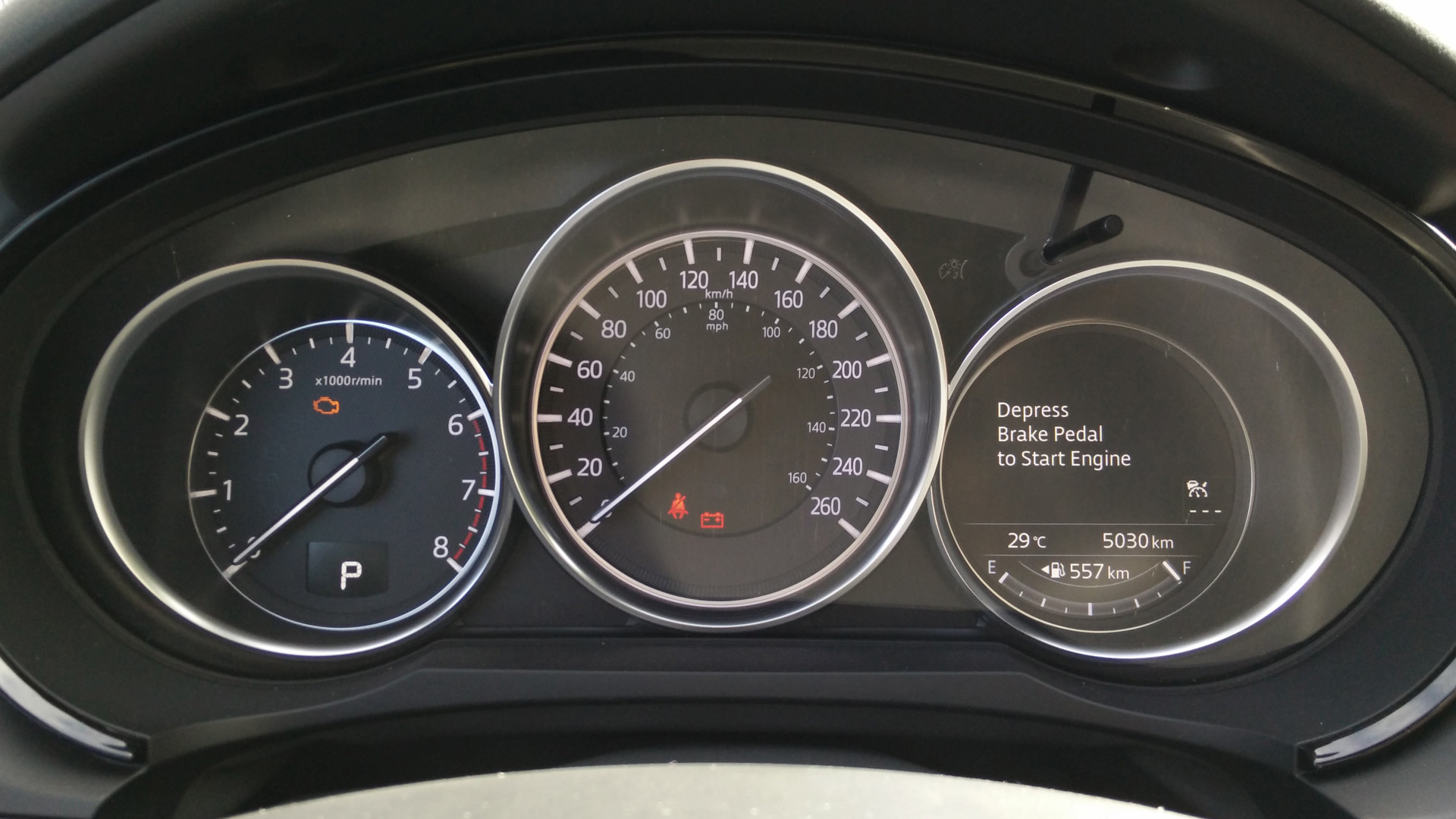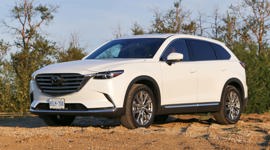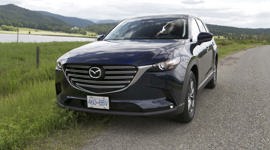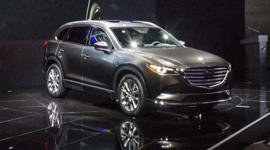For a company that prides itself on delivering emotion, Mazda's ideas about human rationality are almost adorable. Case in point, the power output levels for the new CX-9's 2.5L turbocharged four-cylinder, a new heartbeat for the company's flagship seven-passenger crossover. Using premium fuel, 250 hp is available; switch to regular and you'll get just 227 hp, the same as a first-generation WRX.
If you think people complained about the published horsepower figures for the fourth generation MX-5, you ain't seen nothin' yet. Here we have a large crossover aimed to compete with the likes of the Ford Explorer and Honda Pilot, and it's down on oomph versus both. Does that make any sense for a company with the tagline, “If it's not worth driving, it's not worth building”?
This isn't a bigger CX-5 so much as it is the mothership for a fleet of CX-3s.
However, much as with the new MX-5, the proof of any Mazda is in the driving, and there's another figure that deserves examination: 310 lb-ft of torque at just 2,000 rpm. That's a very stout figure, about what BMW gets out of their turbo'd straight-six, and no one ever complained about a so-equipped X5's ability to scoot. Let's leave the bench-racing and forum-bashing aside for a moment to get a camouflaged pre-production version out on the streets of Los Angeles and see what's what.
Mazda's CX-9 arrives to us with the same suite of design and engineering upgrades that the rest of the fleet has benefited from over the years. From the Skyactiv side, we get a useful curb weight reduction (90 kg less in FWD models, 130 kg less for AWD), and a general strengthening and stiffening of the chassis. From the Kodo design language, we get a fresh exterior that's remarkably well executed.
This isn't a bigger CX-5 so much as it is the mothership for a fleet of CX-3s. Mazda's three-row gets the LED headlight and taillight treatment, the flowing hunched flanks, and an overall impression dominated by the shield-shaped front grille. It does sort of look a bit like the disapproving Sam the Eagle from the Muppets, but rotating on the auto show stage in glittering Machine Grey, this is a very handsome car.
Inside, the CX-9 gets a materials and styling treatment intended to push both this specific vehicle and the brand upscale. The use of real metal and wood throughout the cabin is not unlike Cadillac's efforts to stay fresh, and the seats of the top level Signature grade are particularly welcoming. The way the infotainment screen protrudes from the dash will doubtless find a few critics, but at least it's the same easy-to-use system you find throughout the Mazda lineup.
For the CX-9, Mazda's changed their audio supplier to Bose, another move up the scale. Signature trim gets a 12-speaker setup, with twin USBs in the armrest for inputs. I'd have liked to see a USB in the deep bin in front of the shifter as well.
Let's come back to this Signature idea. Mazda's compact offerings have long offered features that you didn't find elsewhere (the Mazda3's dynamic headlights, for instance) – at an added cost. Without an Acura or Lexus luxury brand to move up to, Mazda's top-tier models stretch upscale a little already. Expect a fully loaded CX-9 to compete against something like an Infiniti QX60. And yes, I had to go look up that model name to make sure I had the right fancy Nissan.
Certainly the interior appointments will please cross-shoppers, as will the focus on feel over easily seen utility. If the Pilot is a bigger CR-V, and looks it, then the CX-9 is intended to be the prettier option both inside and out.
There's still plenty of utility though, with the mid-row seats plenty comfortable. The pre-production prototype tested had some quibbles in getting everything to slide correctly, but it's worth noting that the right side of the 60/40 split will still slide with a child-seat installed, much the same as the Nissan Pathfinder. Rear seats are a little tight, as with everything in this segment, and when they're deployed cargo area takes a hit. There are, however, a couple of storage bins hidden underneath to keep little-used items tucked away.
Compared to the Toyota Highlander and the Honda Pilot, the CX-9 looks and feels less bulky and slightly nicer inside. When fully equipped, the Toyota's probably the closest in trim quality, while the Pilot does a pretty good job of offering the utility levels of a crossover version of the Odyssey.
However, both those crossovers come with the V6 power customers normally expect in this segment. Here's the gamble of Mazda's analysis: people don't actually need six cylinders, and they're wasting money up front and at the pump.
The new 2.5L engine is Mazda's first turbocharged engine in a while. Those who owned either a CX-7 or a Mazdaspeed3 will likely remember the power output of the old 2.3L turbo with fondness, and the fuel consumption with a wallet-twingeing wince. This new engine is touted as being far more efficient.
It's built using some of the lessons learned from the naturally aspirated Skyactiv engines, and comes with some clever tricks. For instance, the 4-3-1 exhaust piping uses much the same exhaust gas scavenging effect as the non-turbo engines' 4-2-1 headers, and is designed to pair exhaust pulses to keep hot exhaust from piling up in the cylinder post-combustion and robbing power.
There's also a lag-reducing component to the way exhaust gas is fed into the turbo. While not as complex as the 911 Turbo's variable-vane turbocharging, Mazda's dynamic turbo uses valve-operated flow – just before the turbo's hot-side – that can squeeze exhaust through a narrower channel at low engine speeds. This way the gas stays compressed, hot, and filled with energy, spooling the turbo faster. When flow starts picking up, a larger channel is opened to move things along.
Mazda also injects cool exhaust gas back into the chamber using a cooled Exhaust Gas Recirculation (EGR) system. With the heat taken out of it, exhaust gas is an inert substance that can be used to keep in-cylinder engine temperatures down under boost; ordinarily, the other way of keeping an engine cool under high-rpm, high-boost situation is to run a richer fuel/air mixture. The EGR lets Mazda run their engine a little leaner.
Neat stuff if you're a mechanical engineering student, but glazed expressions on the showroom floor. Okay then, how about talking about Mazda's covert surveillance efforts?
In order to better understand how their customers were actually using their vehicles, Mazda took a 2.2L turbodiesel-equipped CX-5, and tuned it to what they thought would be an ideal power and torque delivery curve. Then they shadowed SUVs picking up kids from an unnamed high-end school, and tracked throttle usage. As it turns out, even when passing, large crossover drivers rarely venture above 4,000 rpm.
Thus, the engineers at Mazda reasoned, we just need to tune for low-end torque and the real-world fuel mileage will follow. With good down-low grunt, the transmission won't need to kick down as much, and fuel consumption will be kept low.
Behind the wheel... well, it works! The CX-9 has excellent responsiveness, and in the dog-sideswipe-dog world of snarled Los Angeles traffic, this biggish crossover was perfectly capable of leaping ahead to take advantage of a gap. The handling was composed along the twisting Mulholland Drive, though the steering felt slower than something like the CX-3. It's still a Mazda, but one tuned for comfort.
Get out on the highway and start caning the car more aggressively, and the power deficit can certainly be felt. By comparison, the Honda Pilot is deceptively quick, with its hiss of VTEC kicking in. The CX-9 is quick and lively, but doesn't feel built to be wrung out, unlike most of the rest of the Mazda range.
However, I don't think most intenders will notice. What they will notice is the huge improvement in reducing sound levels and vibration. Yes, this is a four-cylinder, but there's essentially no roughness to be felt from the engine. The CX-9 rolls smooth and quiet, and while the 20-inch wheels did tend to hop over the worst parts of California's broken pavement, the ride was very good too.
Mazda claims a 20 percent fuel economy improvement over the old car, and real-world results that impress.
It's an interesting mix, a differently targeted vehicle than we normally see from Mazda. Rather than chasing some theoretical notion of apex-clipping in the canyon roads, the CX-9 seeks to give driving pleasure by looking good, driving quietly, responding to throttle inputs with alacrity, and by hopefully saving at the pump. Mazda claims a 20 percent fuel economy improvement over the old car, and real-world results that impress.
It all sounds pretty good, but as I said, people aren't always rational. There's an old saying about buying horsepower but driving torque, and while I'd expect the CX-9 to deliver solid real-world fuel economy results and a drive that would please 90 percent of segment shoppers, people still like to see the big number printed on the page. That's especially true in these times of relatively inexpensive fuel.
However, the CX-9 does also make a play for your subconscious by offering very pretty styling and a sense that it's not just another family hauler. And, speaking of the subconscious, let's not forget that this powertrain may herald an upcoming Mazdaspeed compact before too long…
